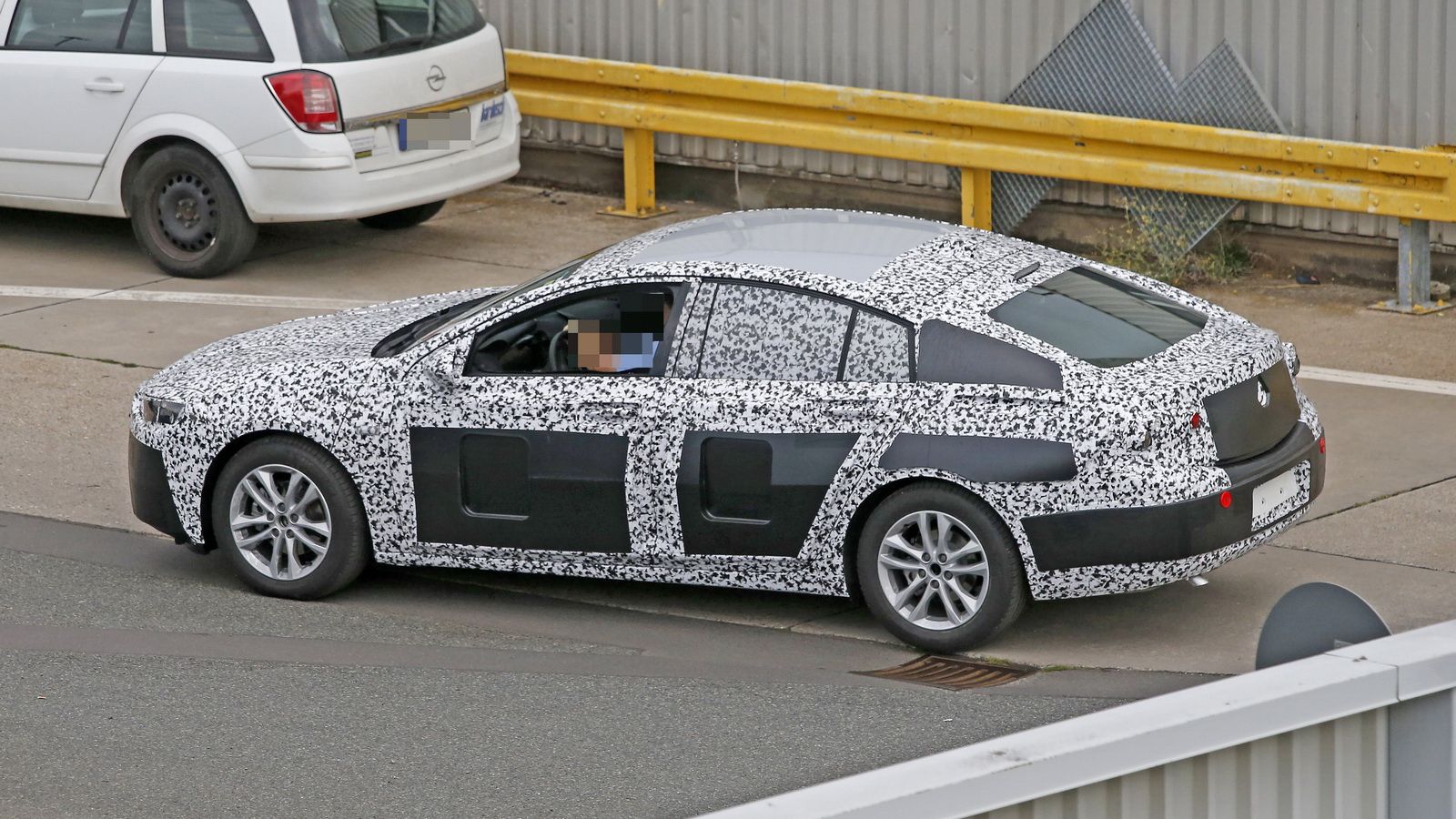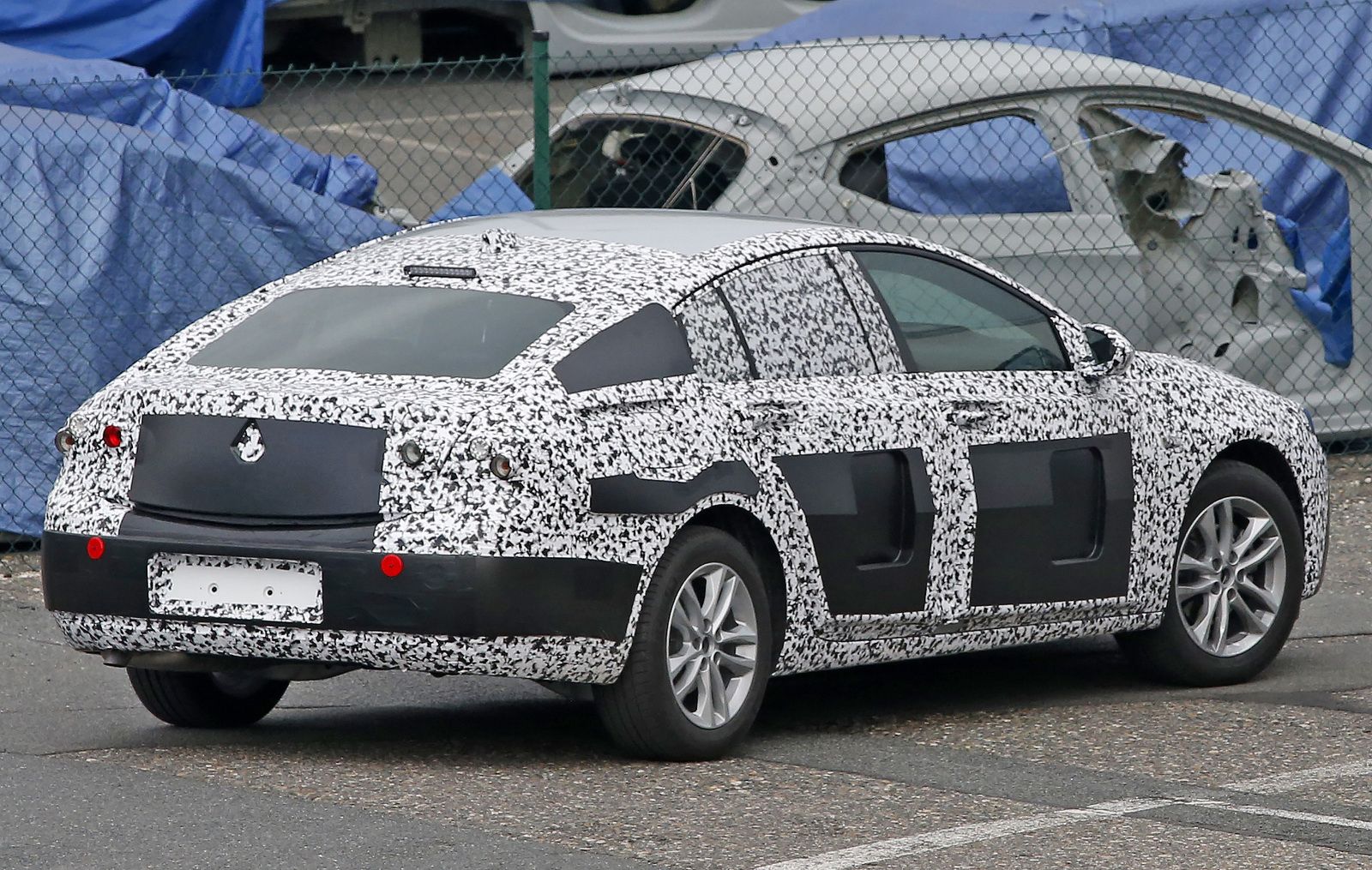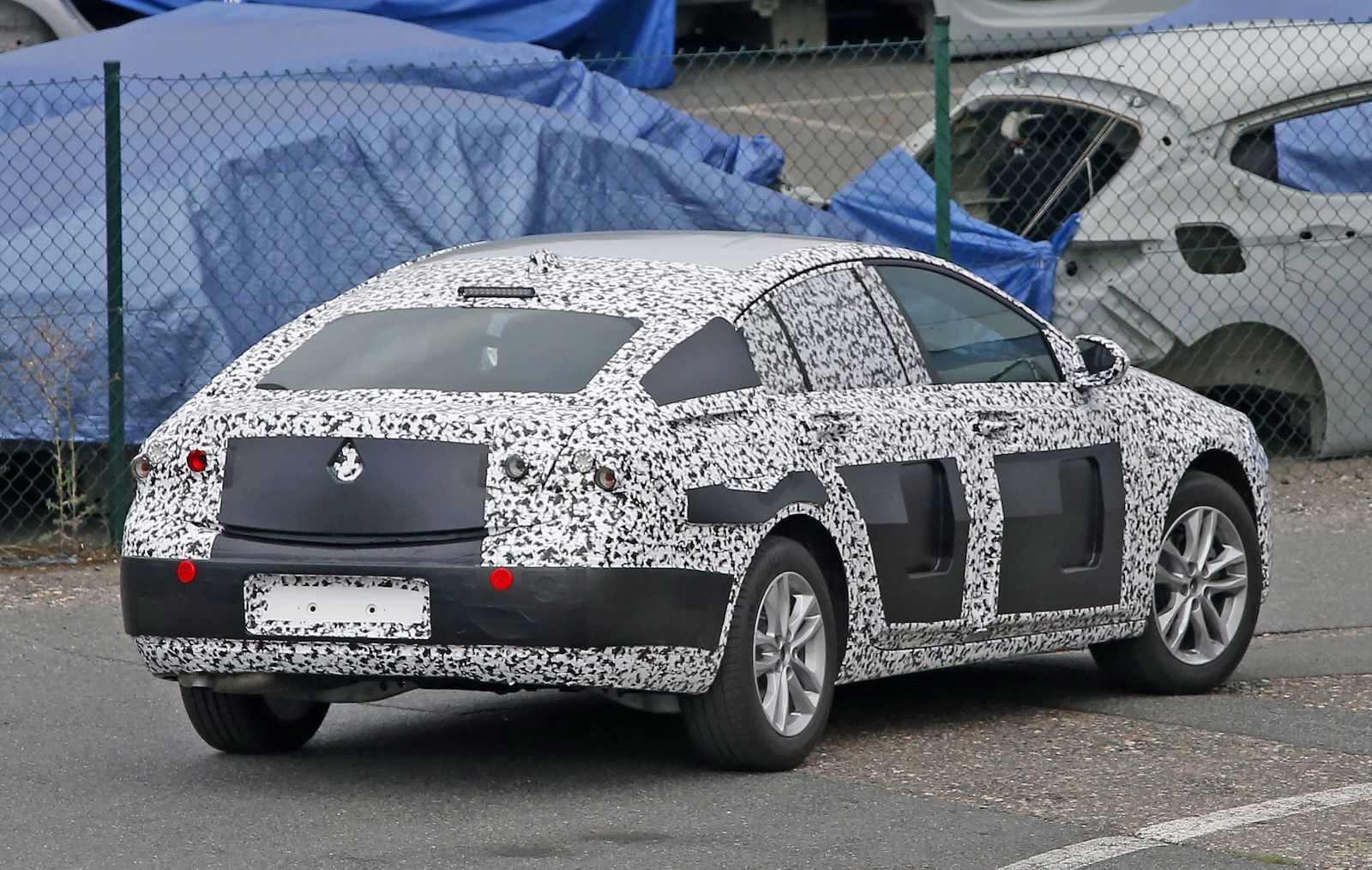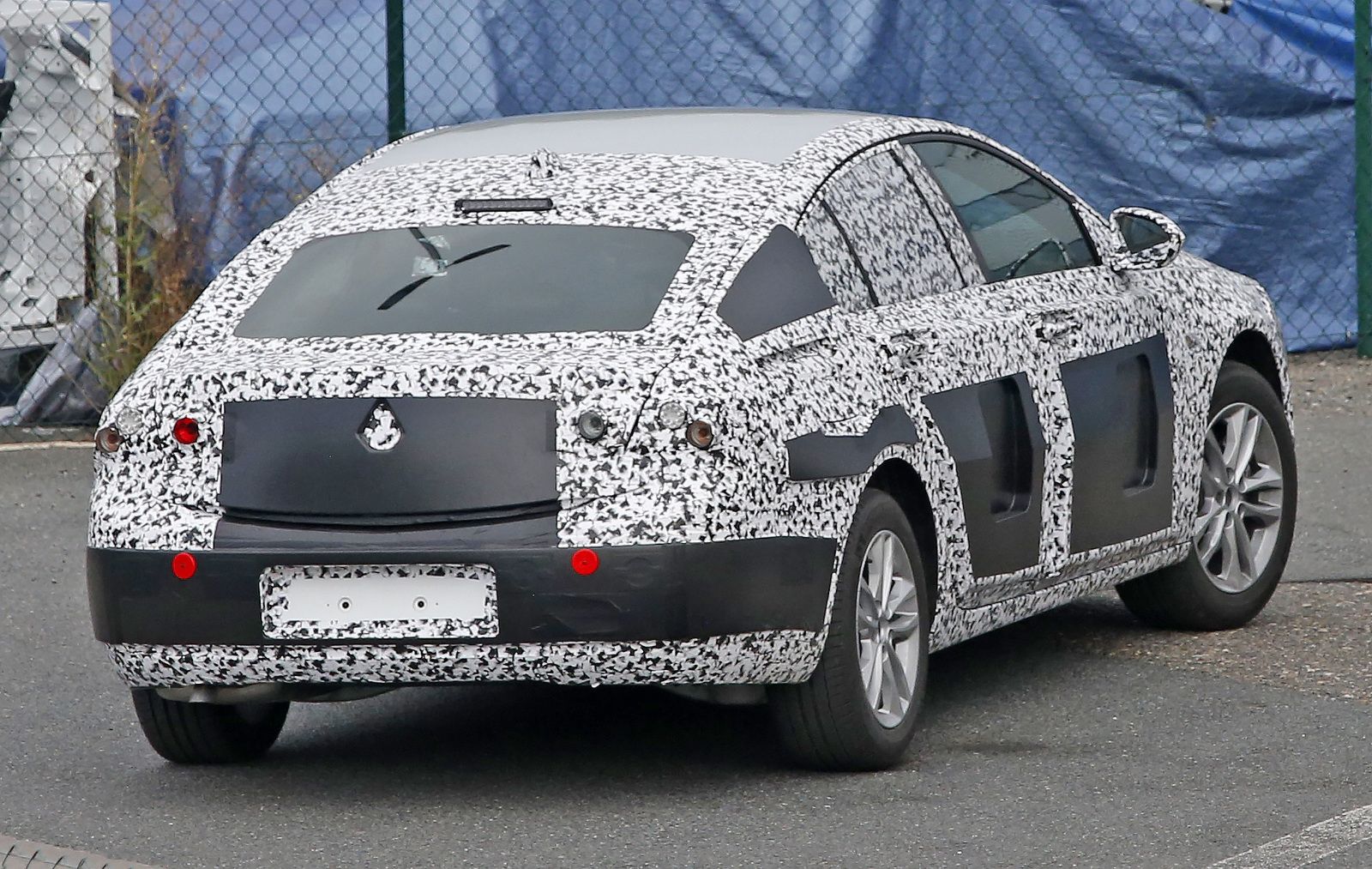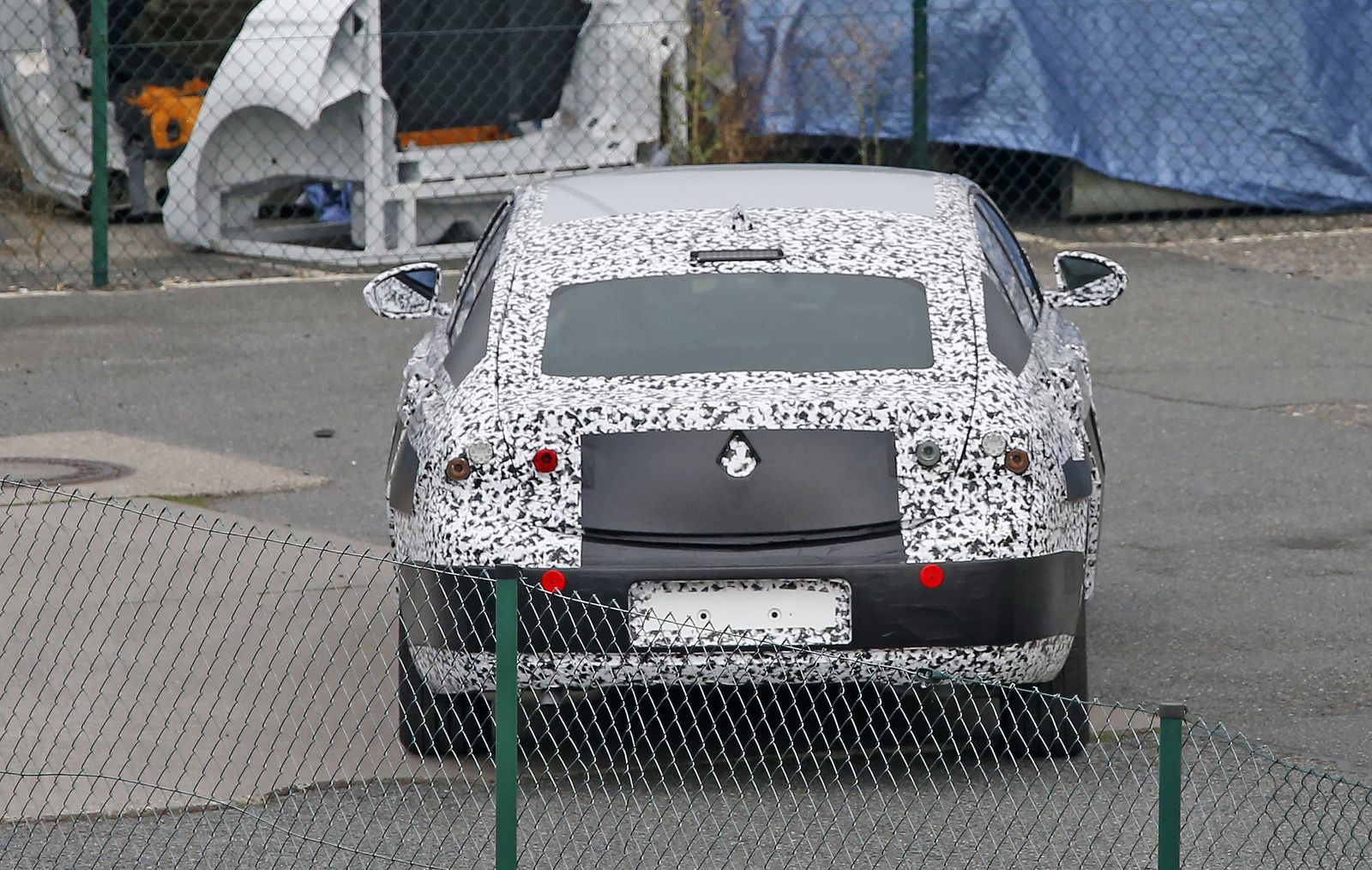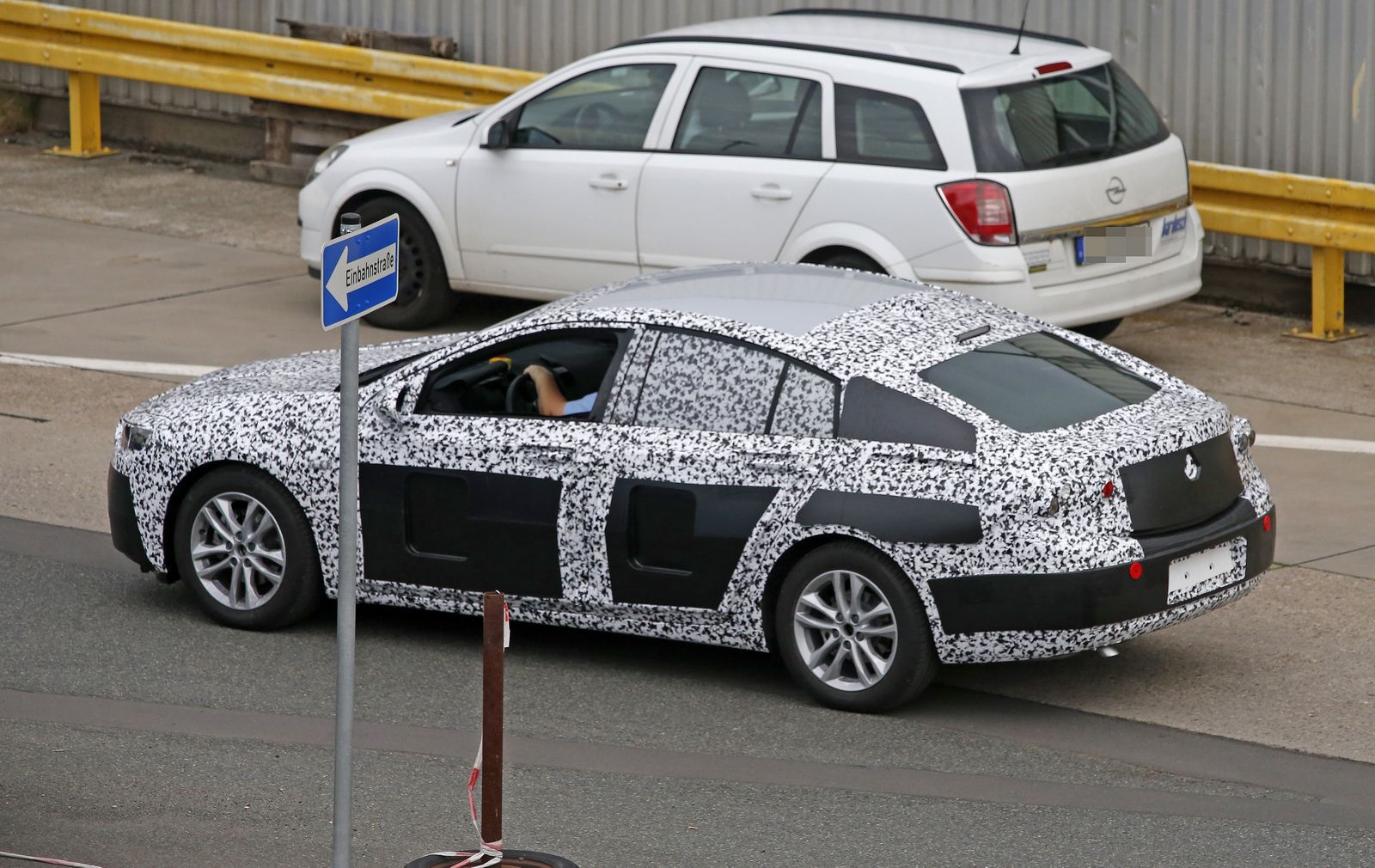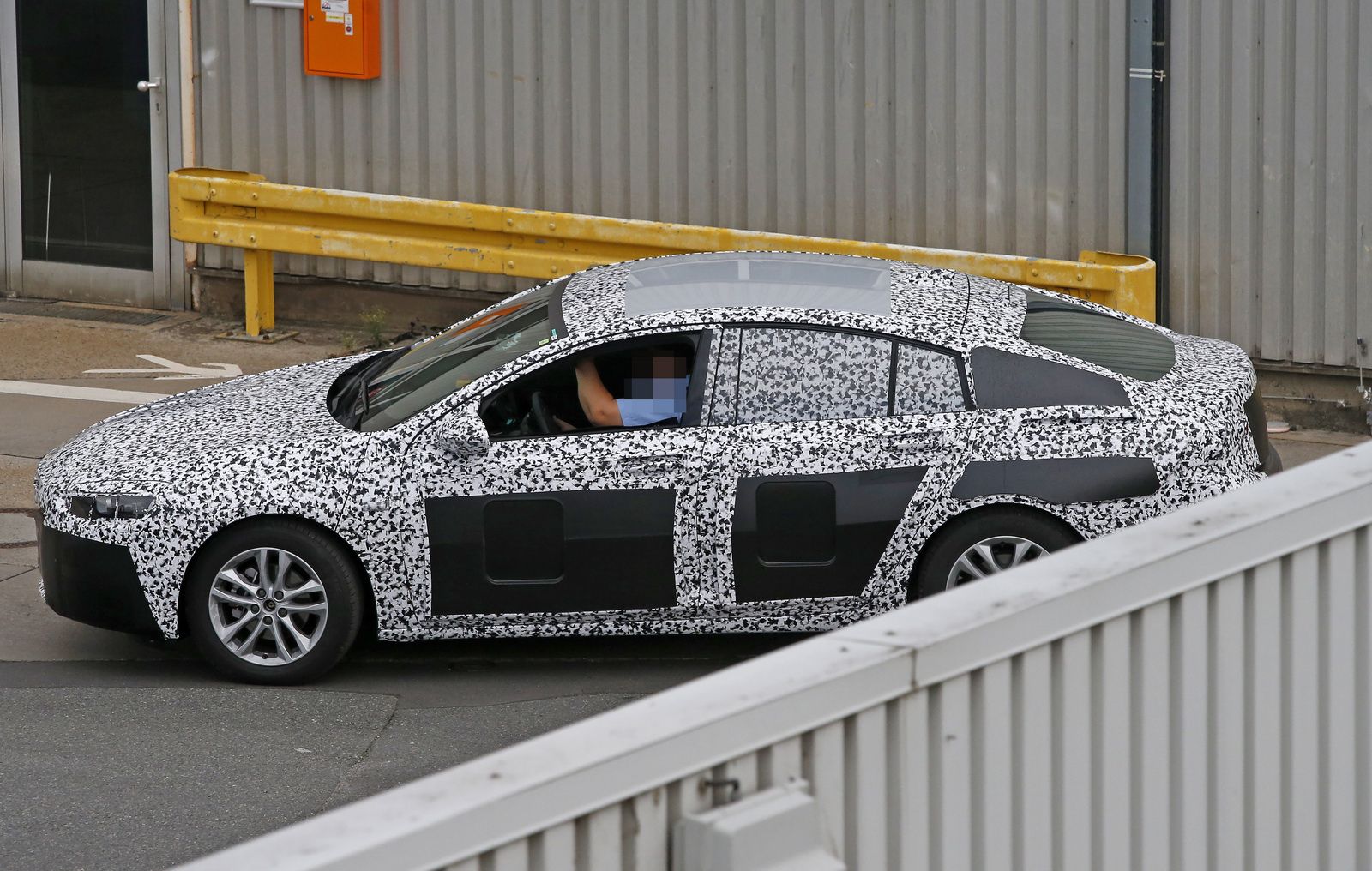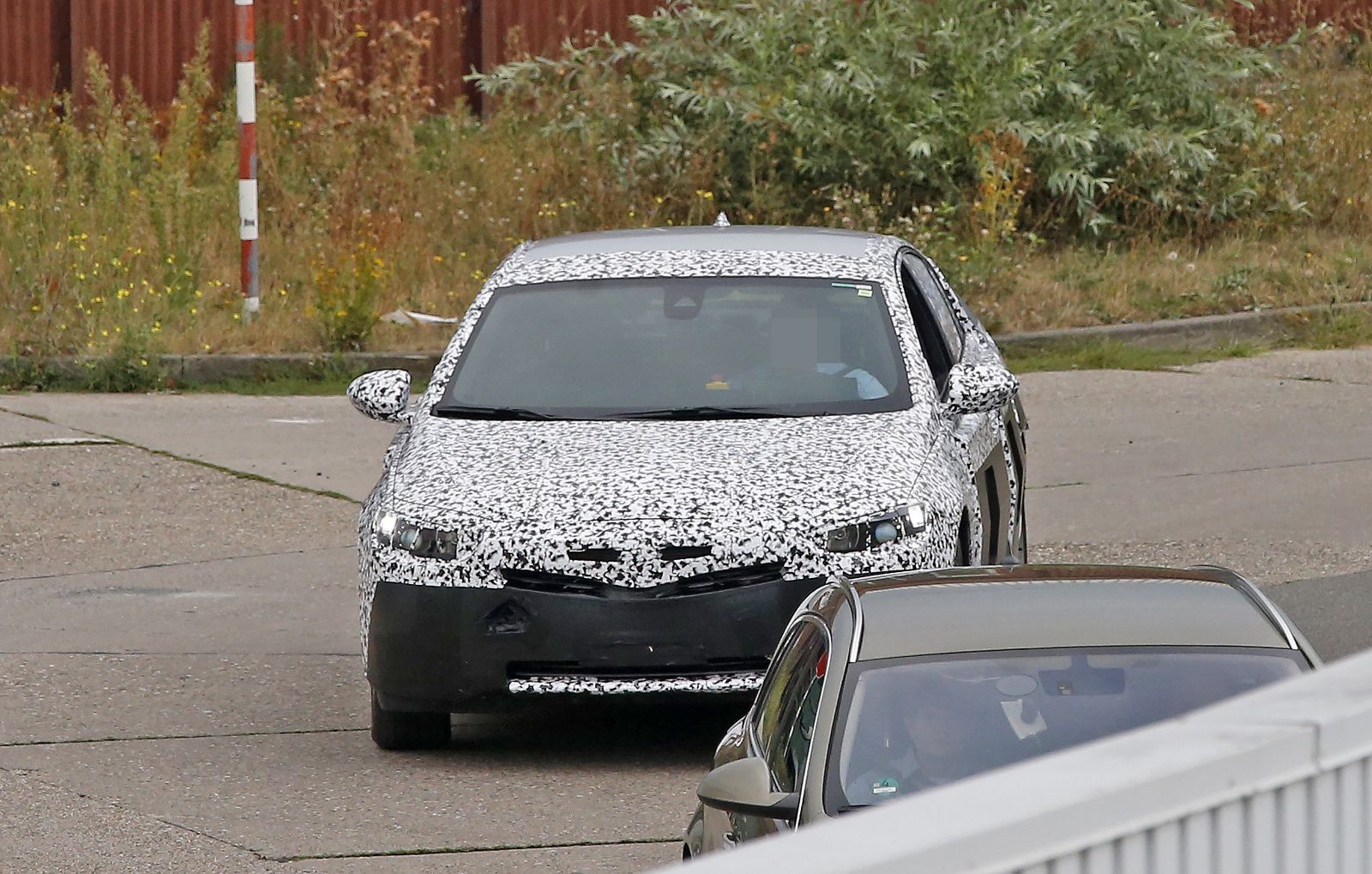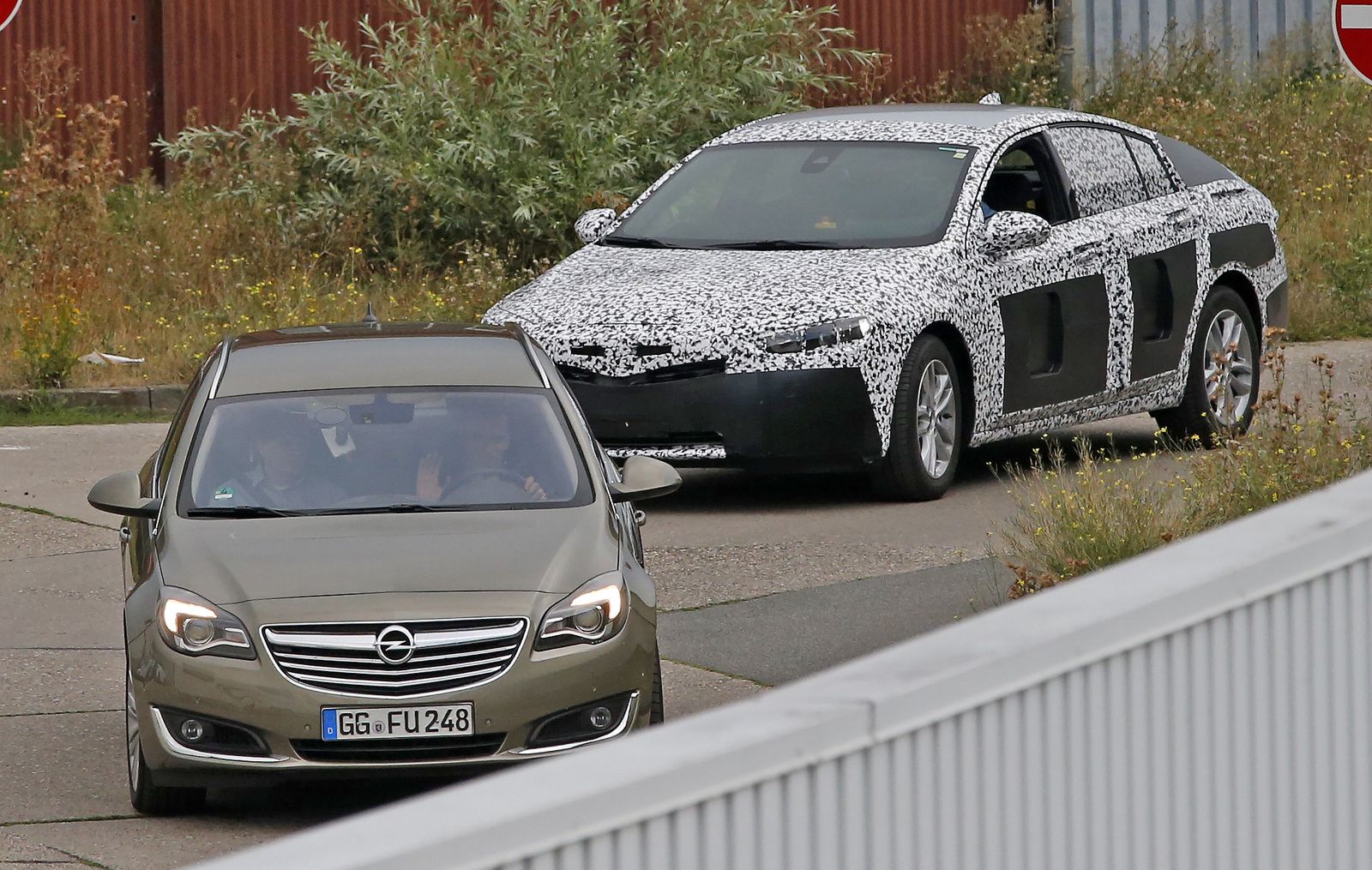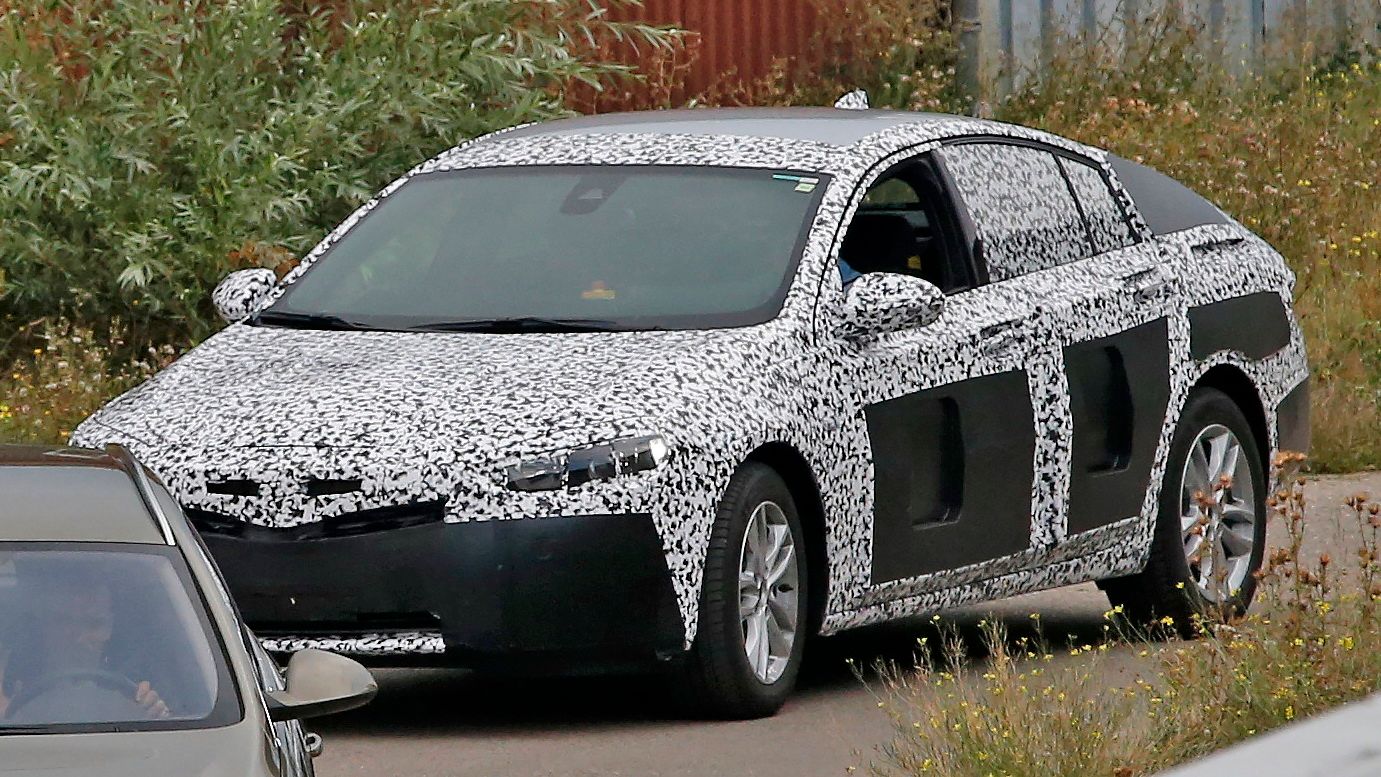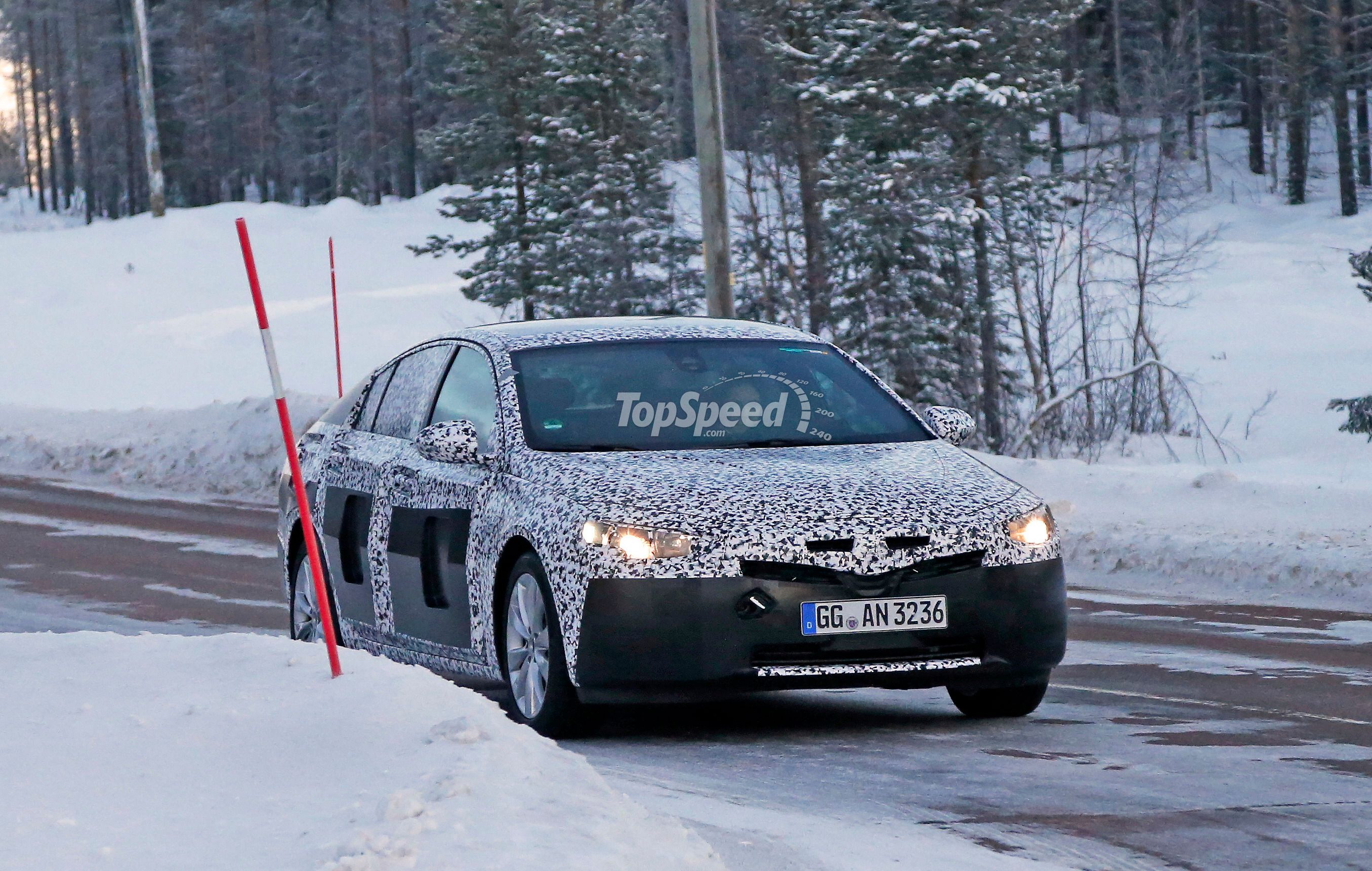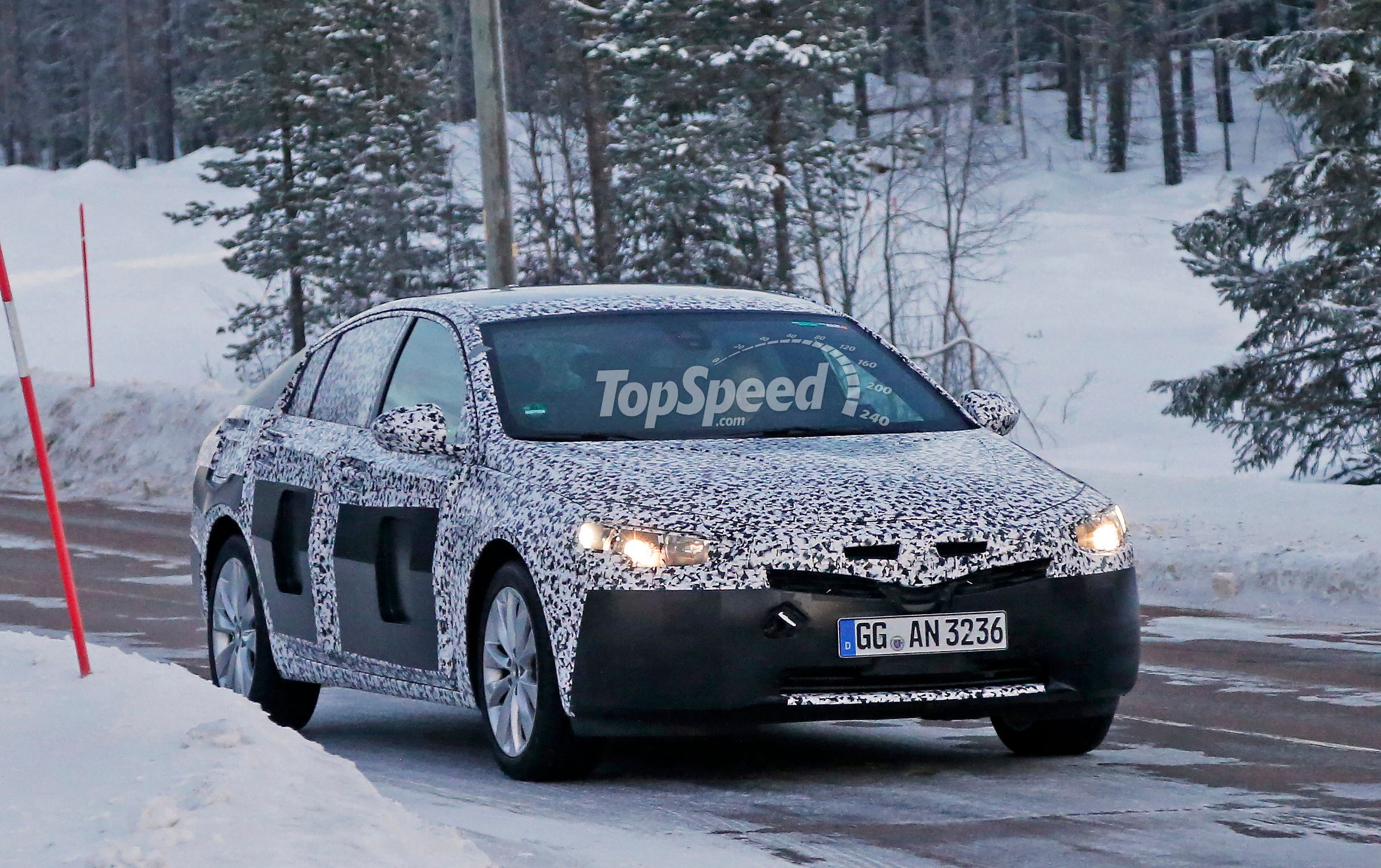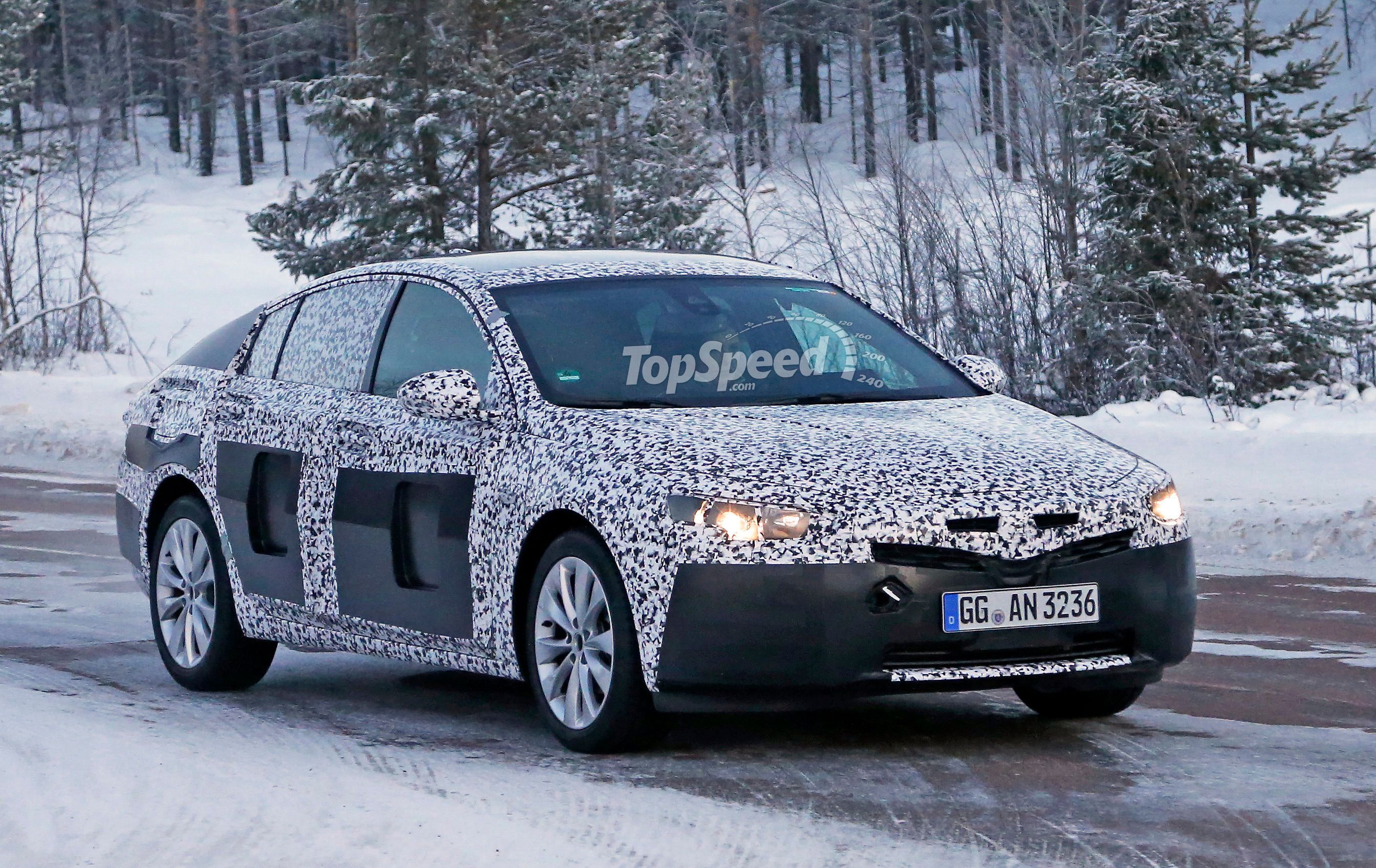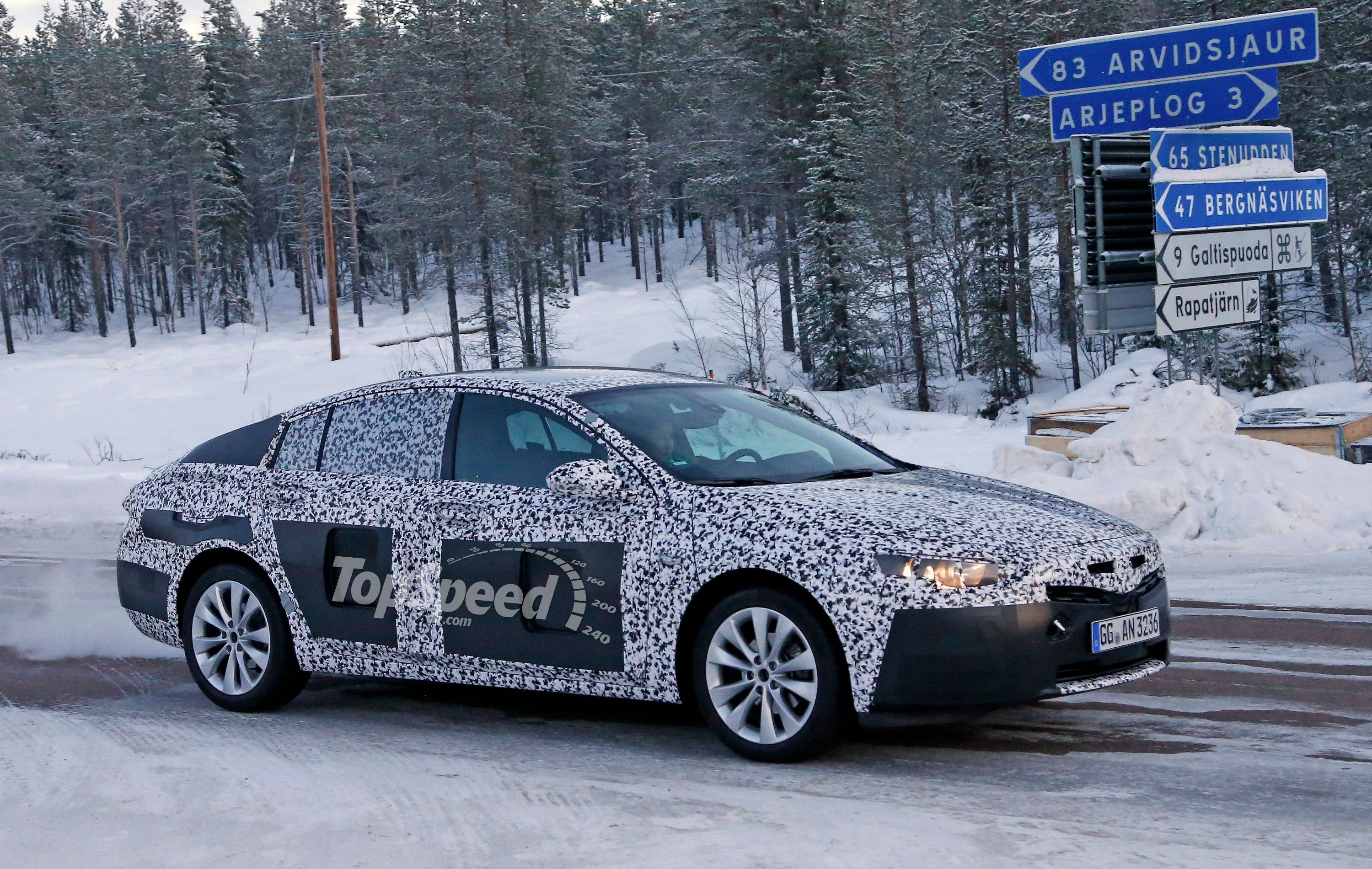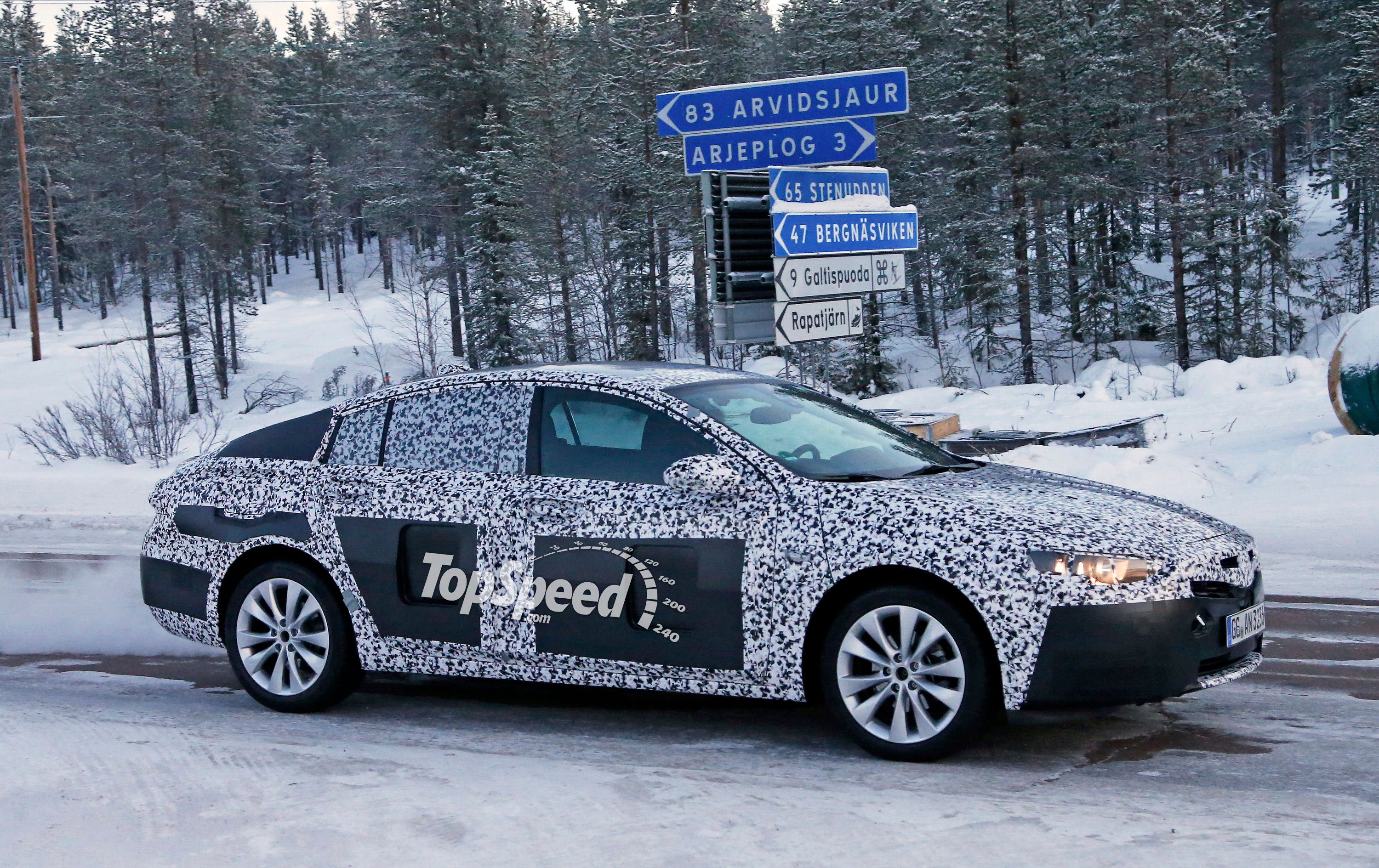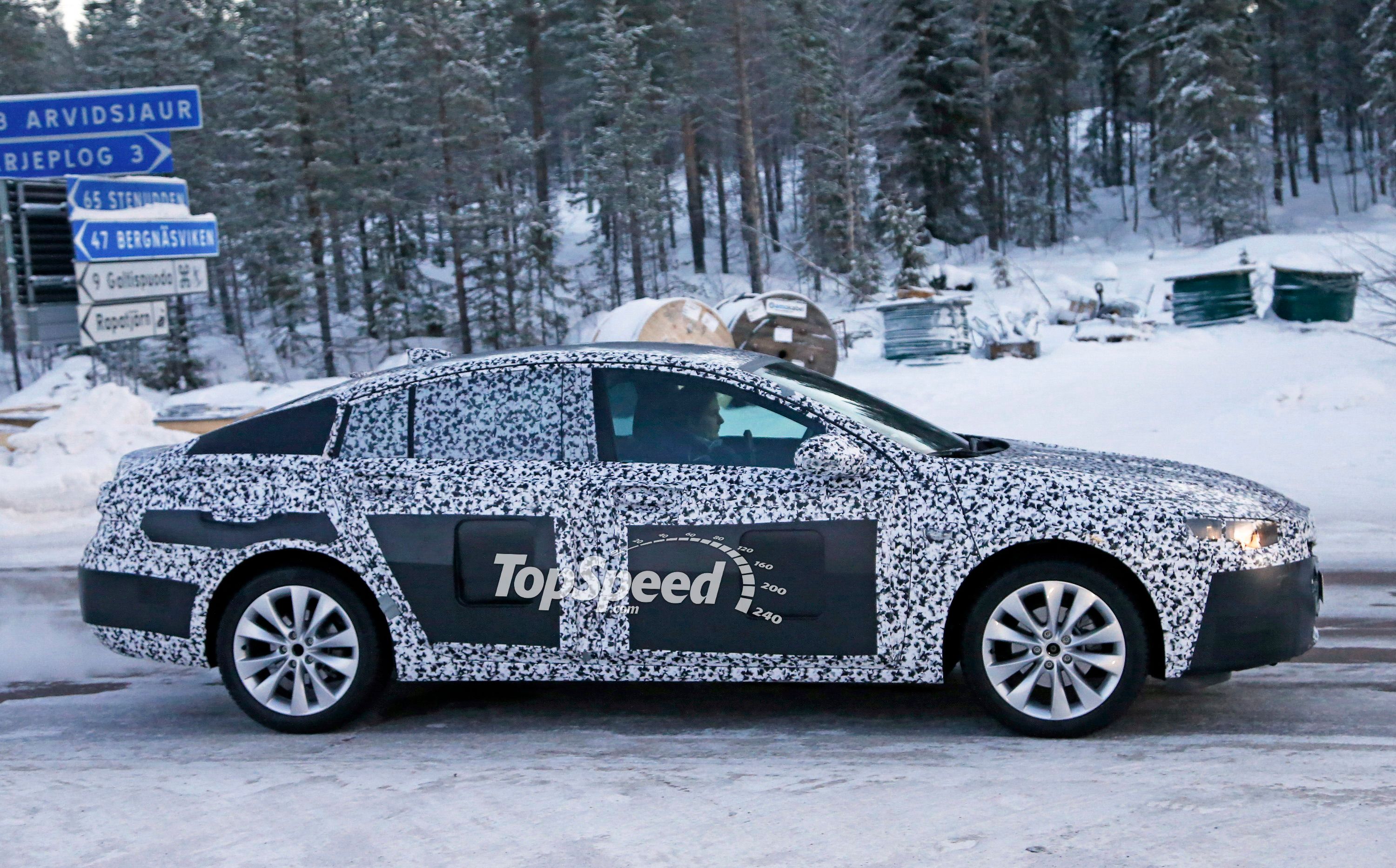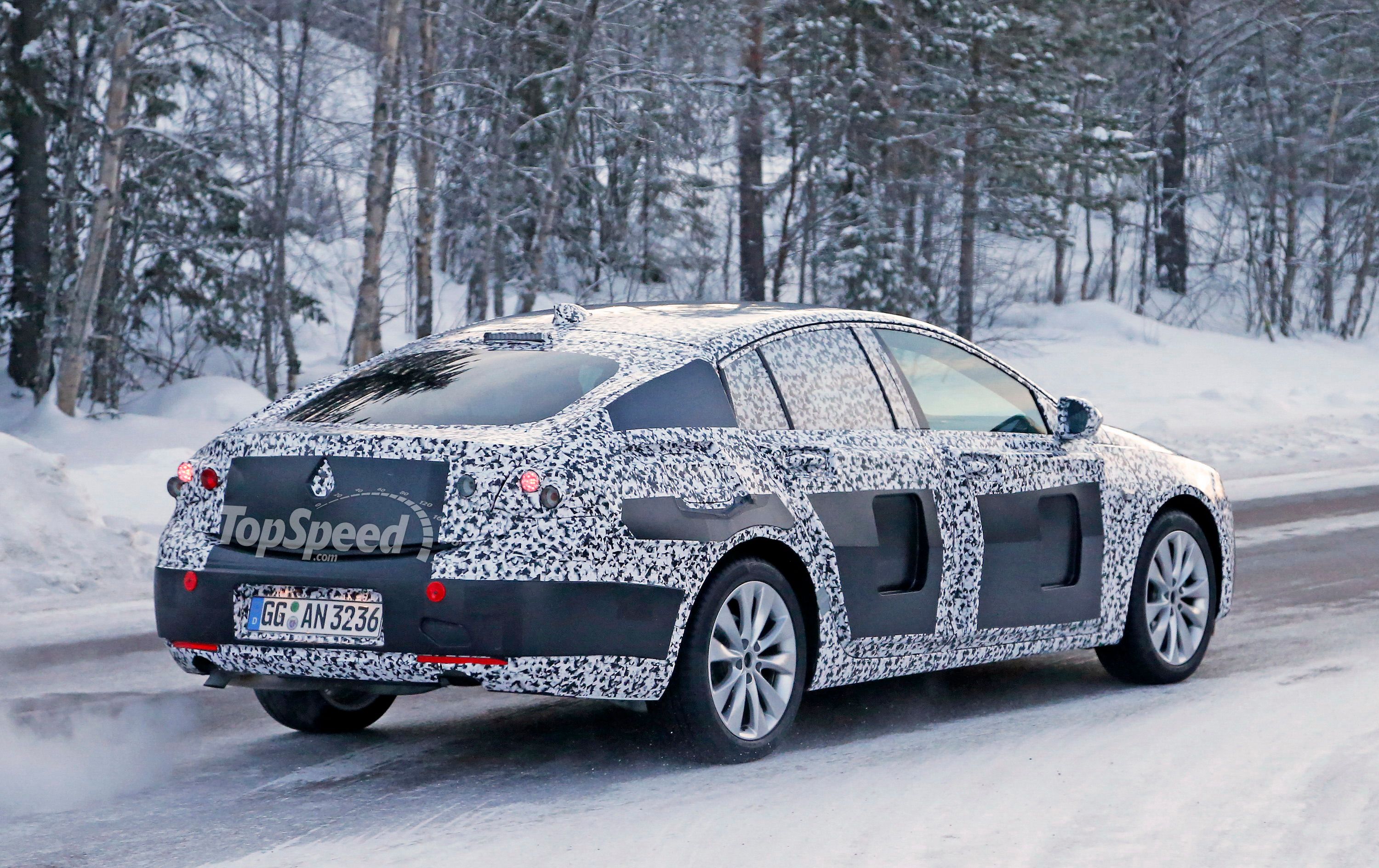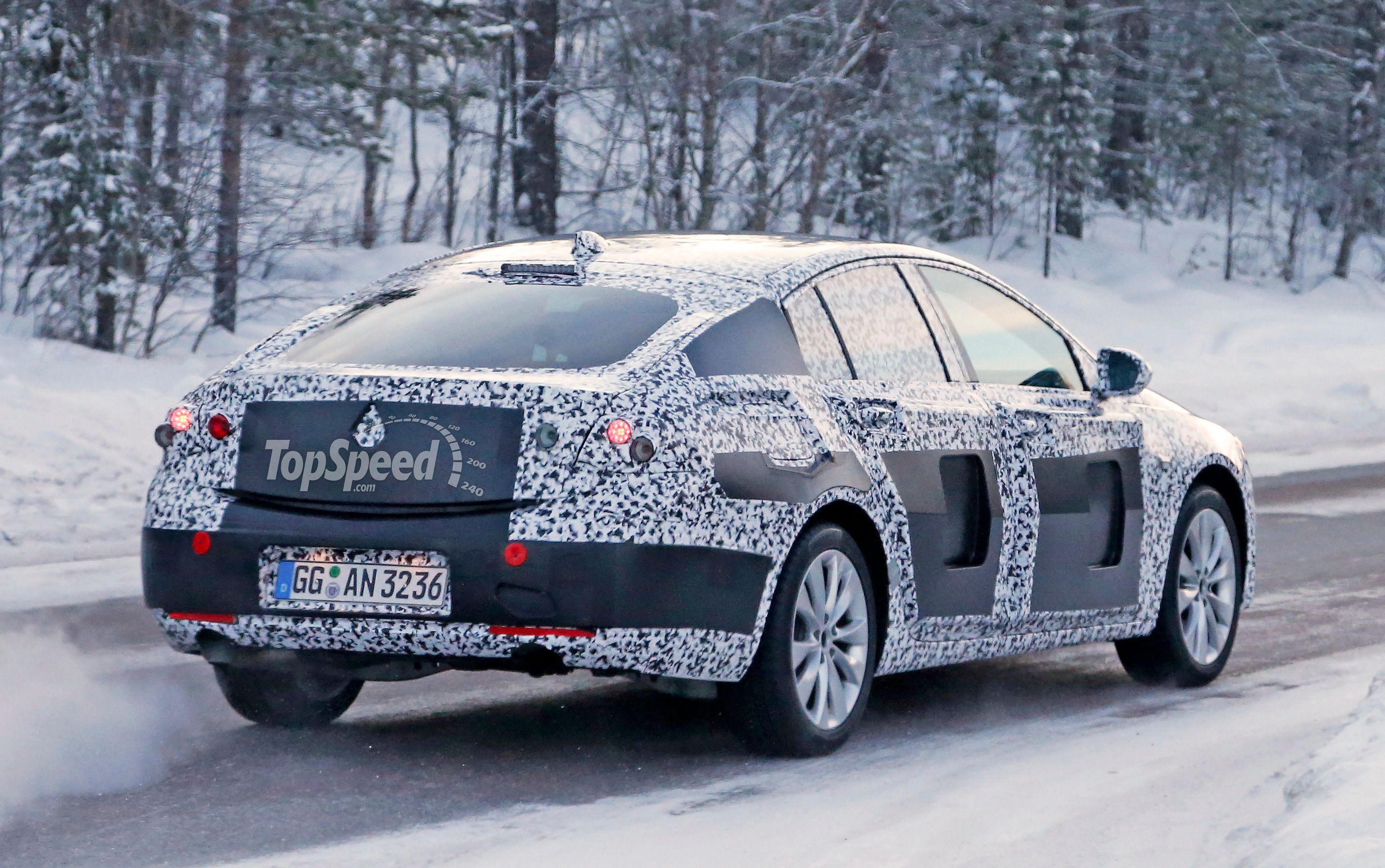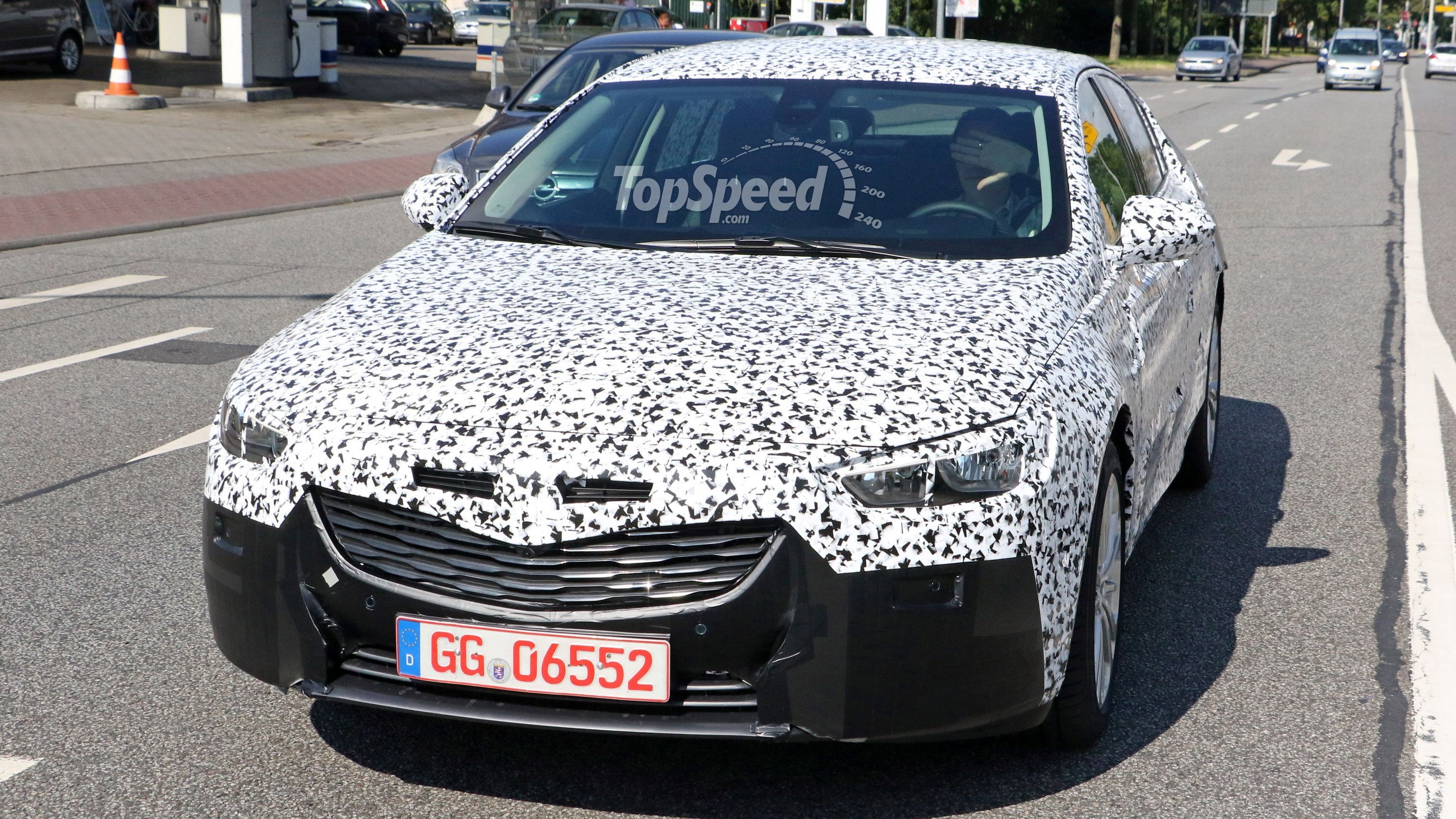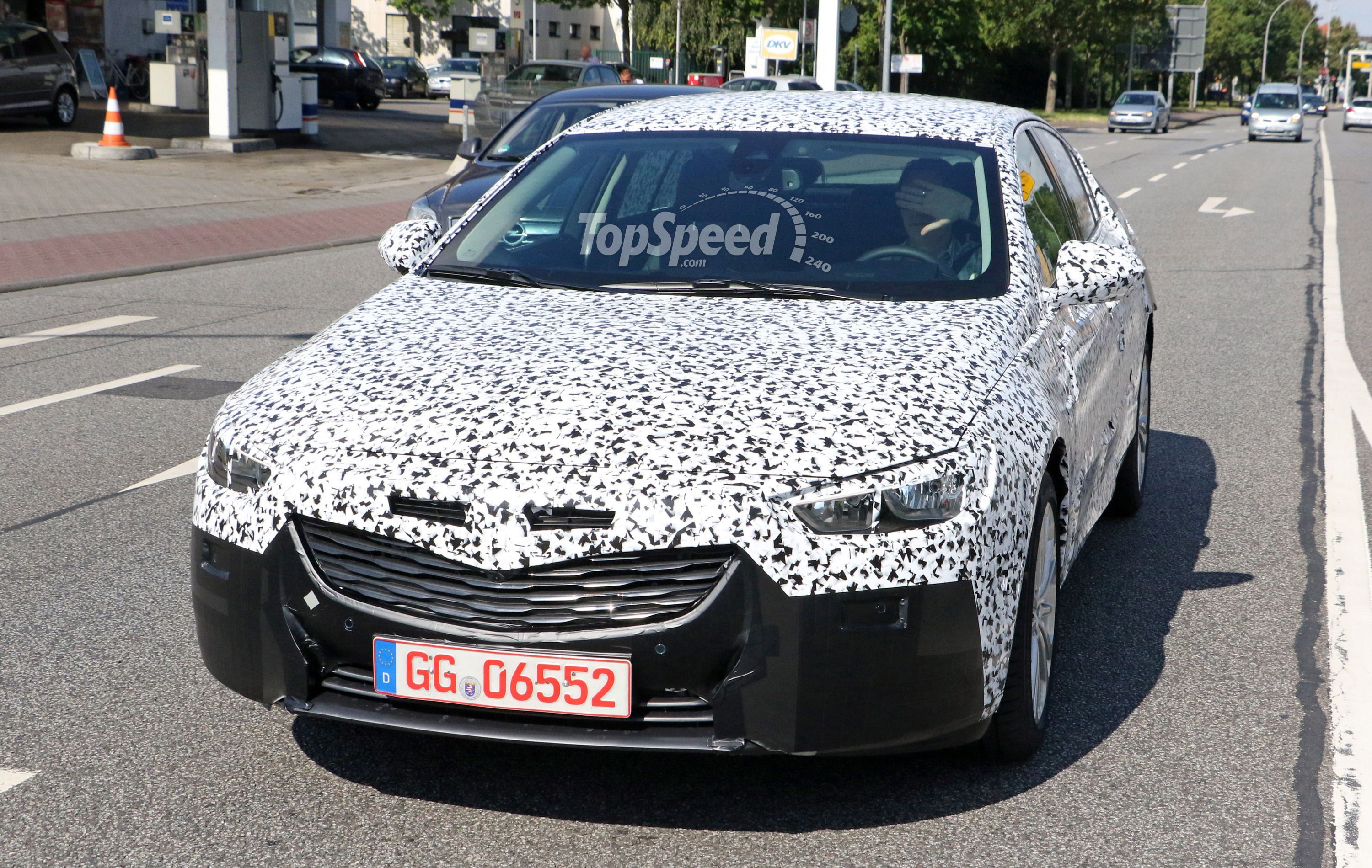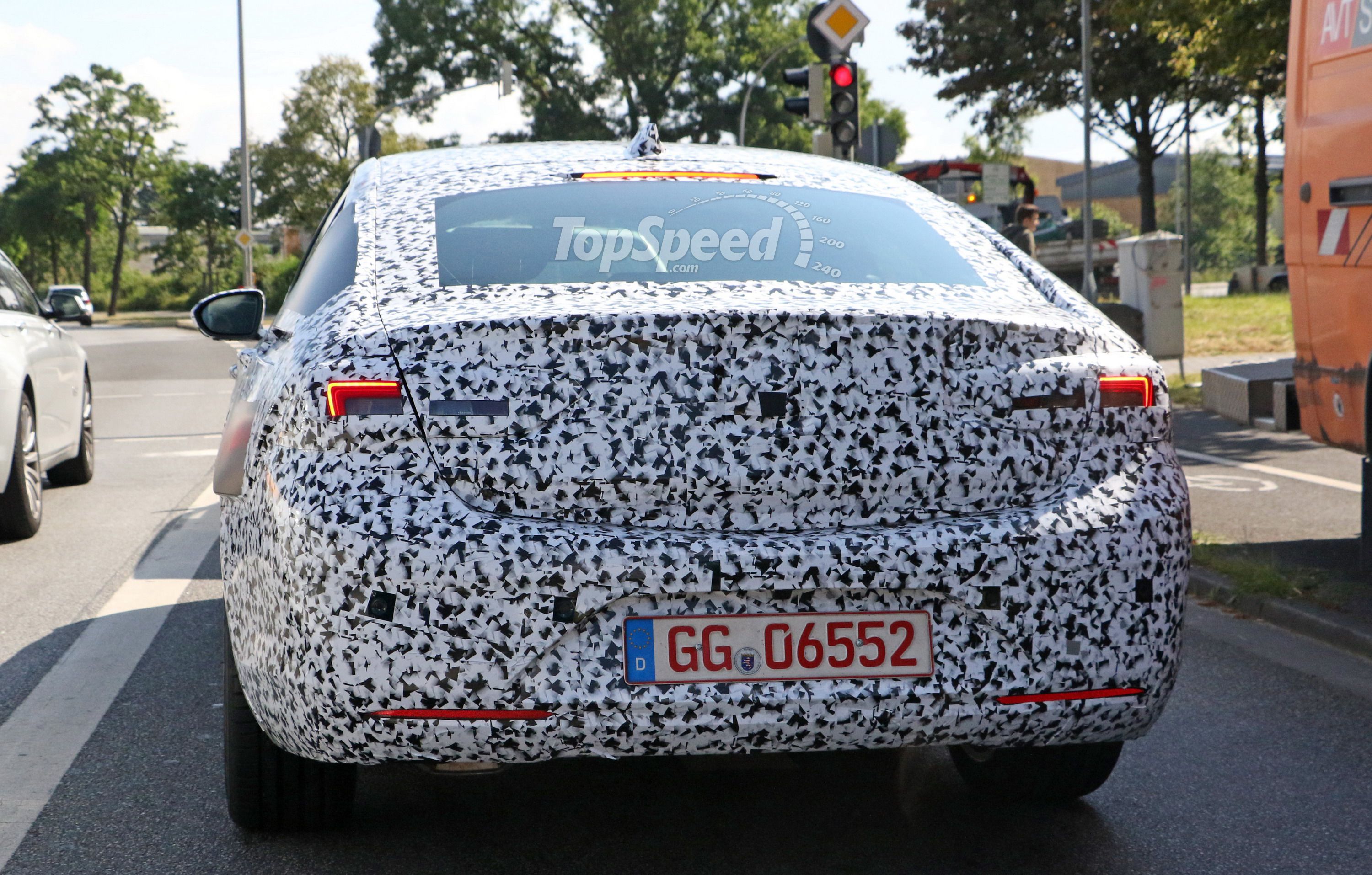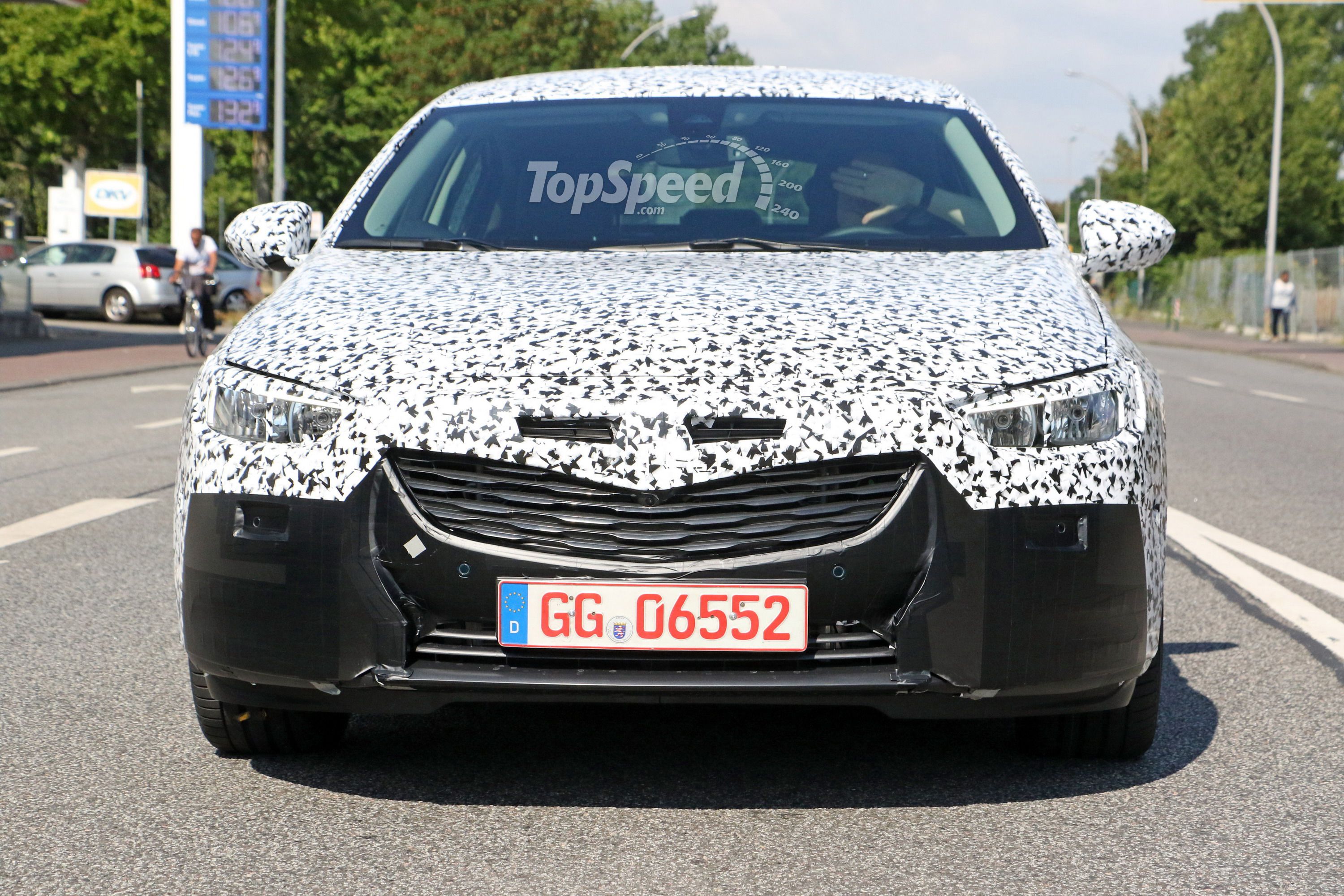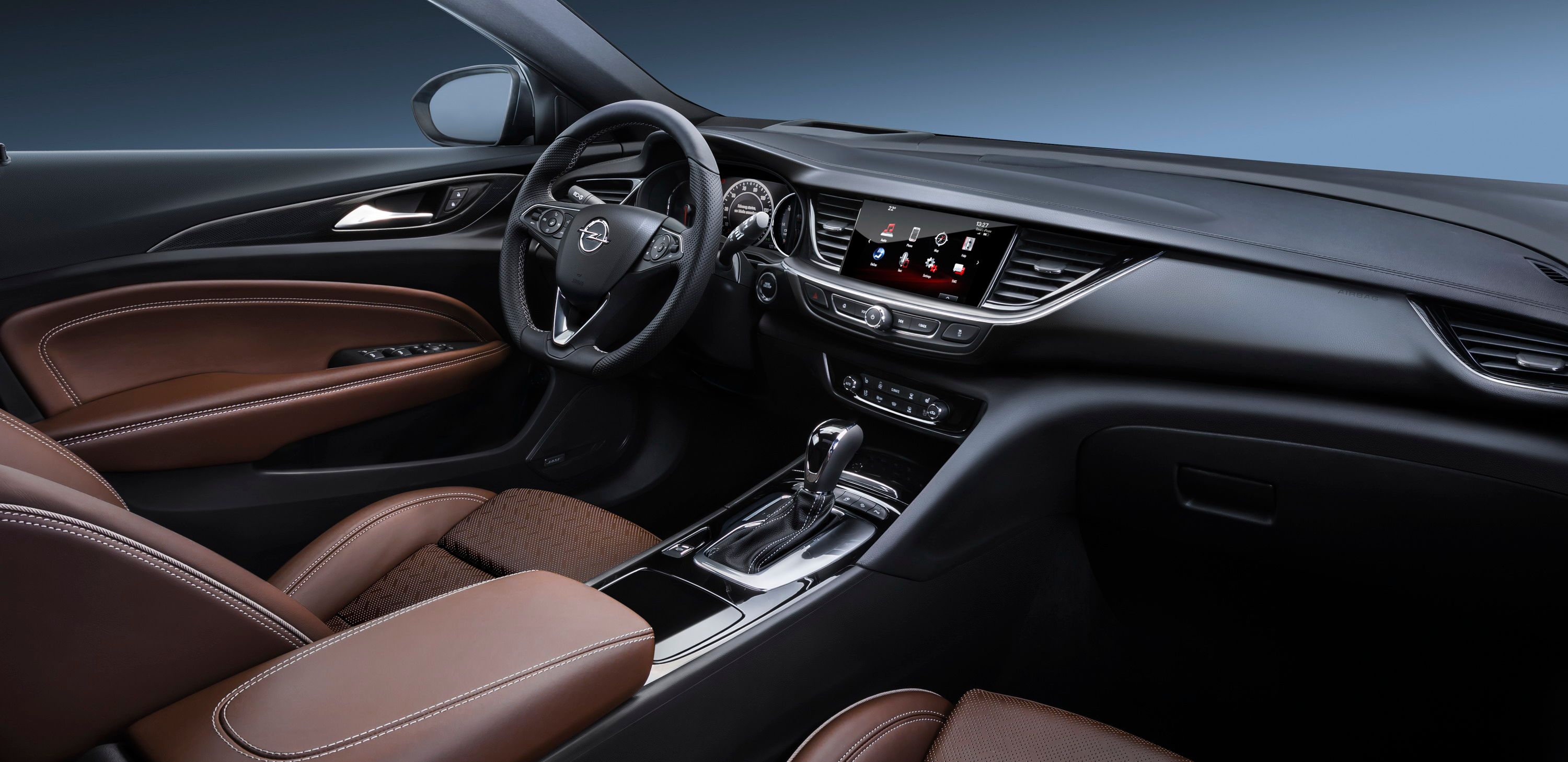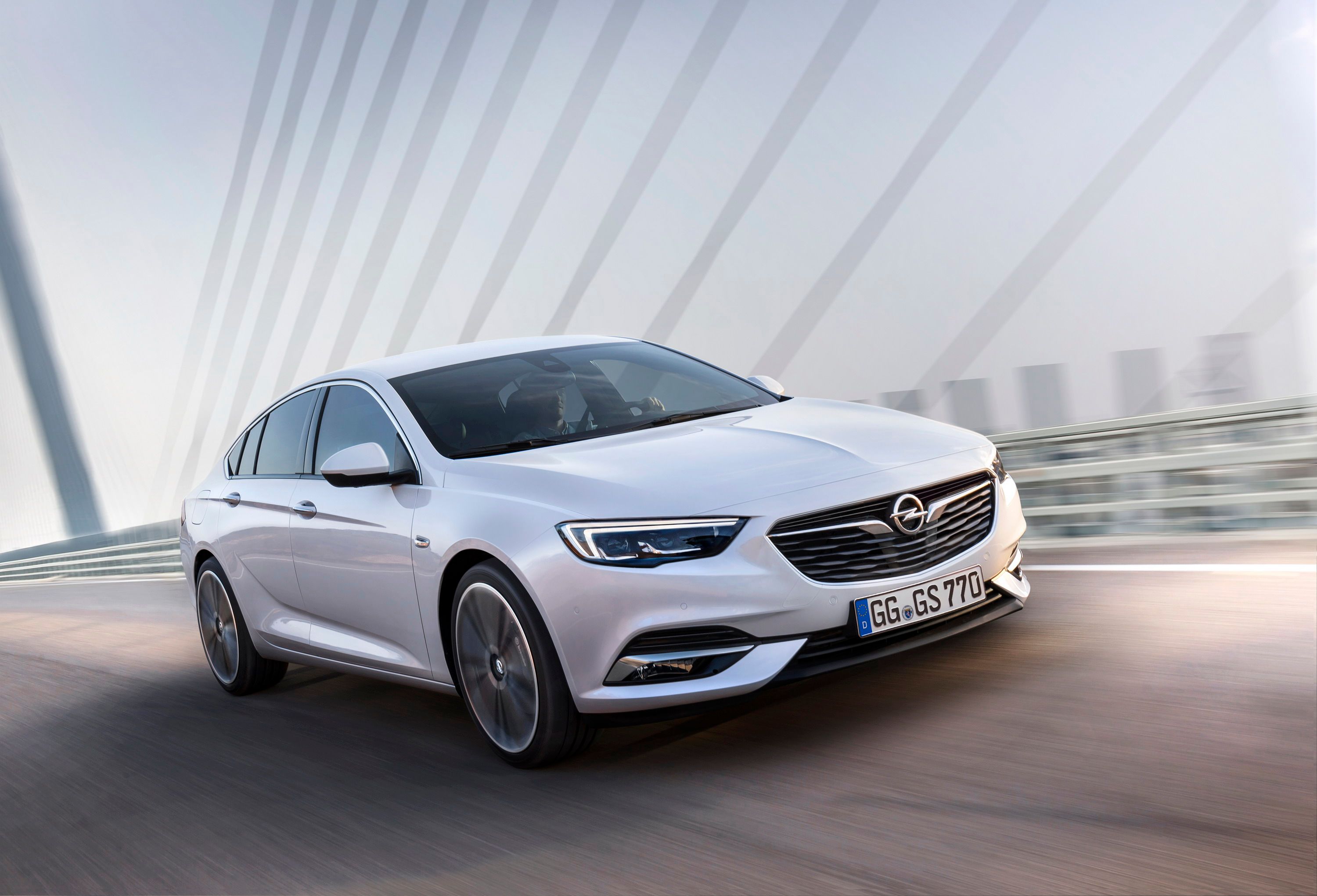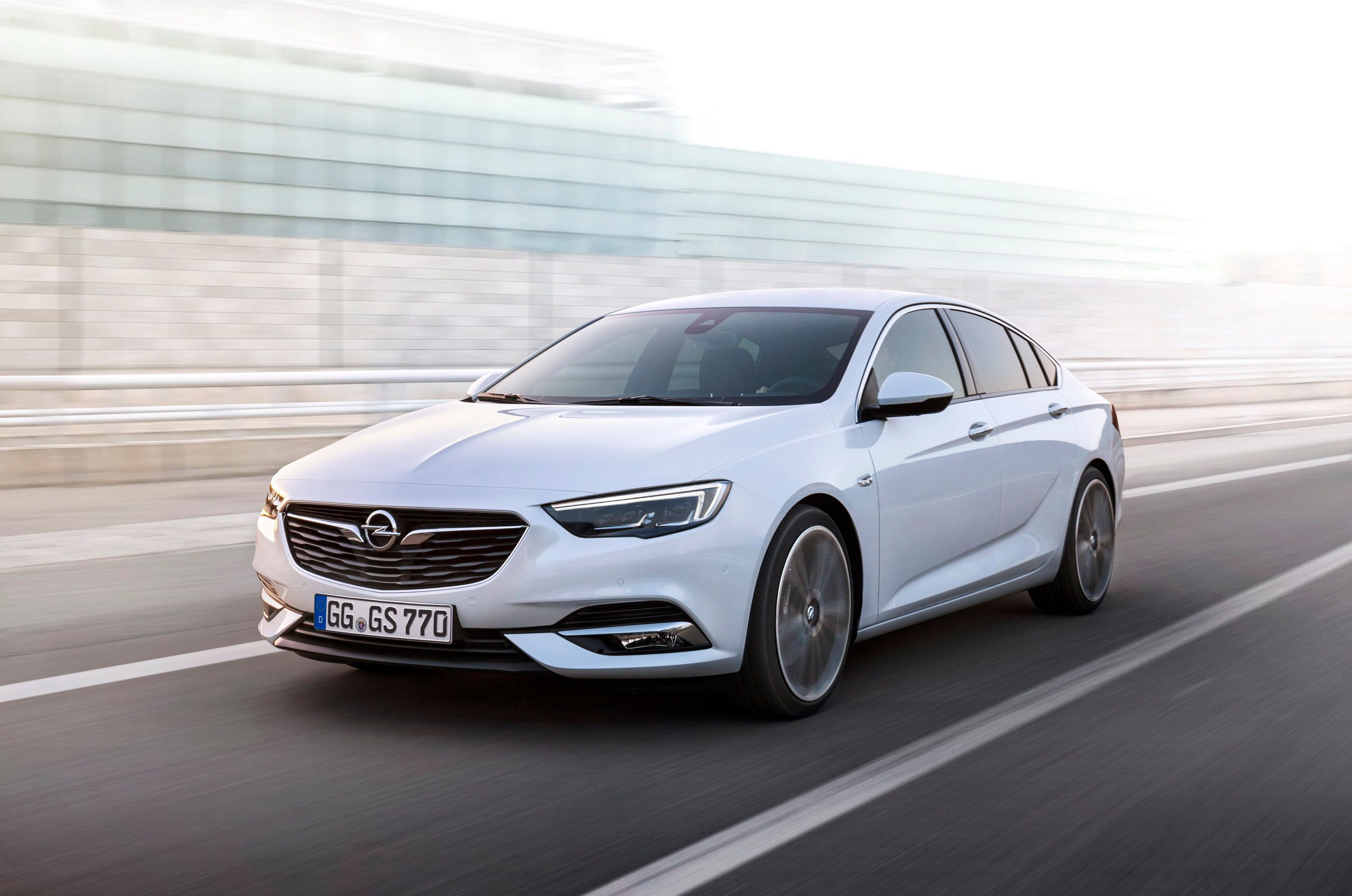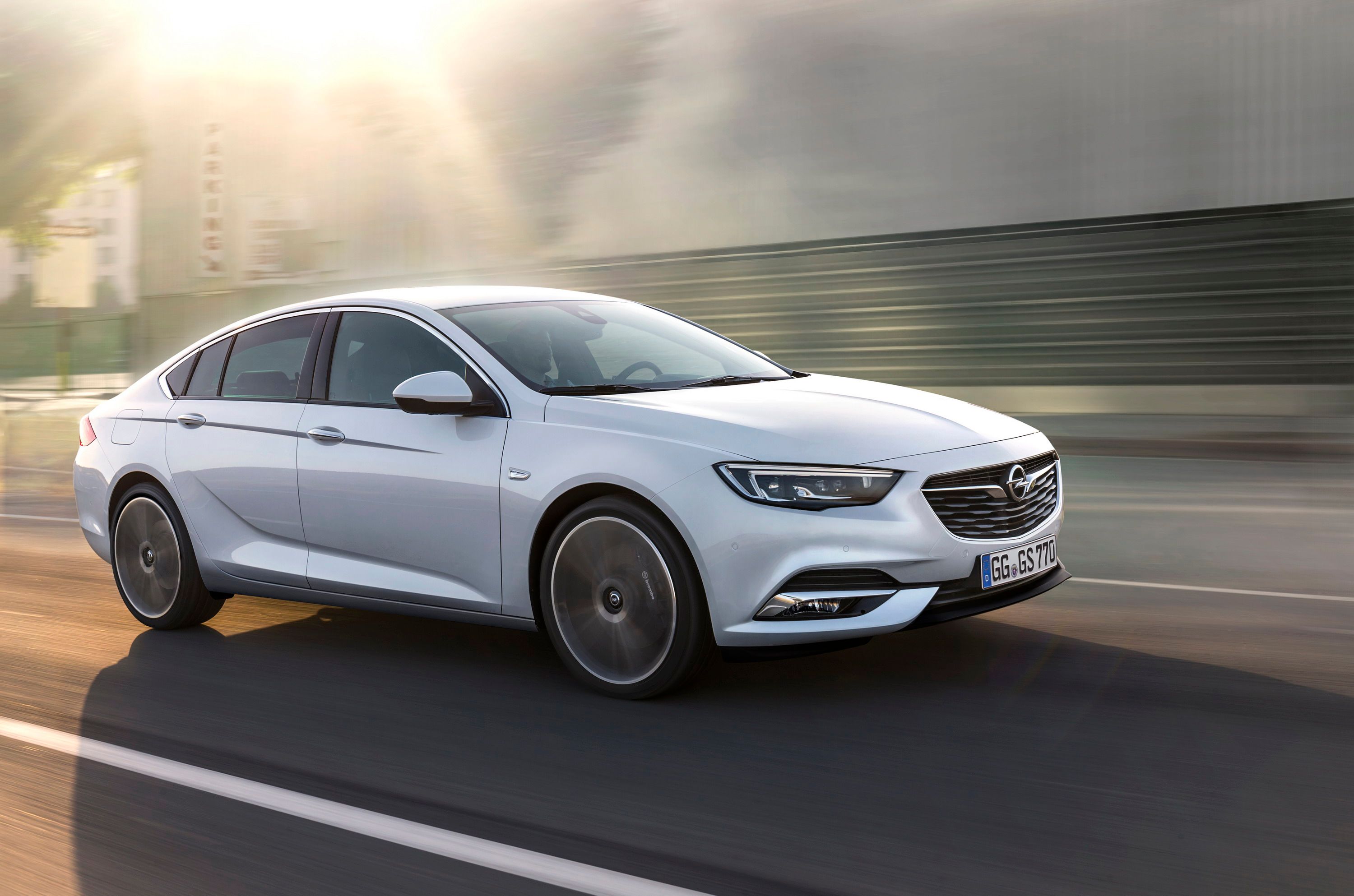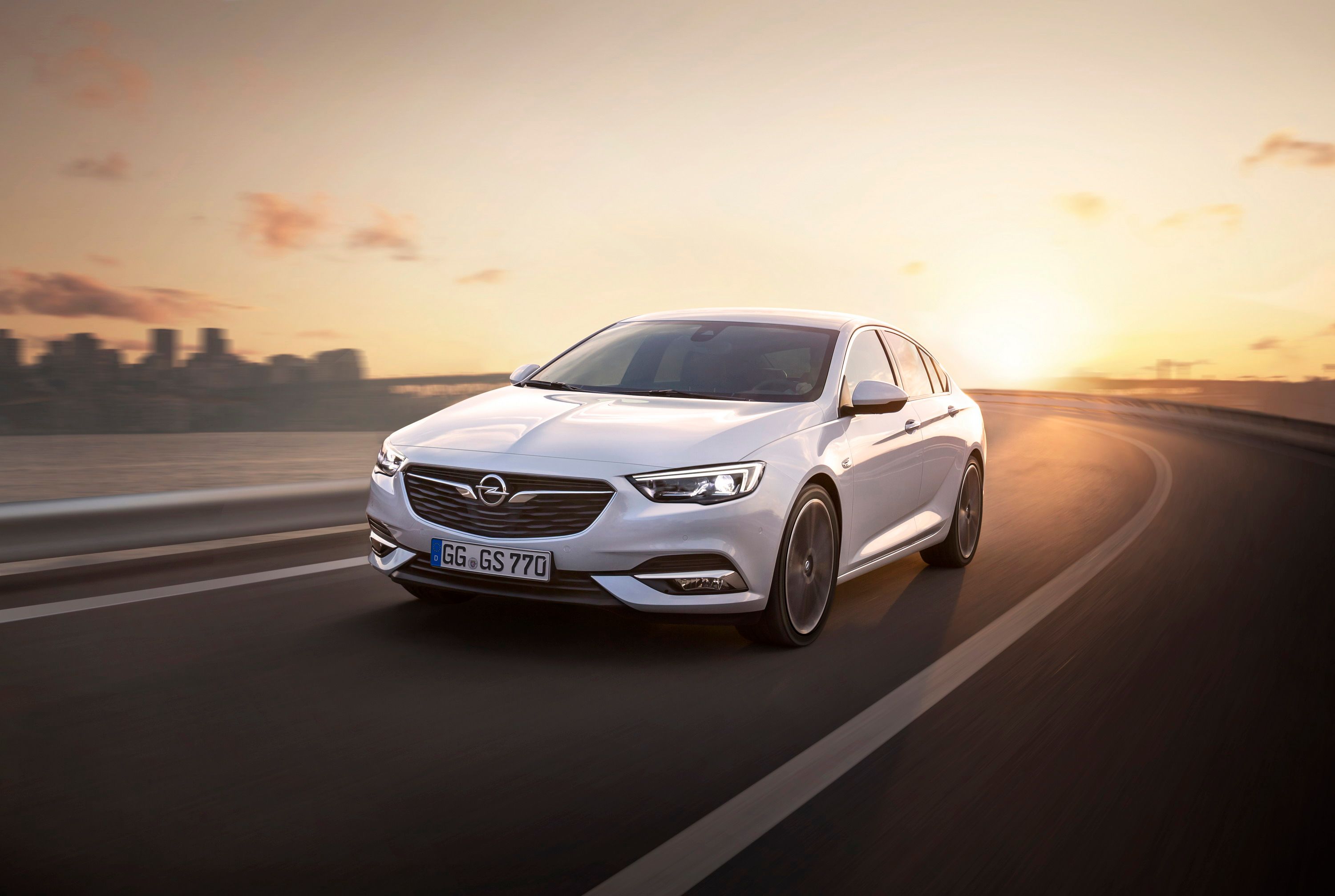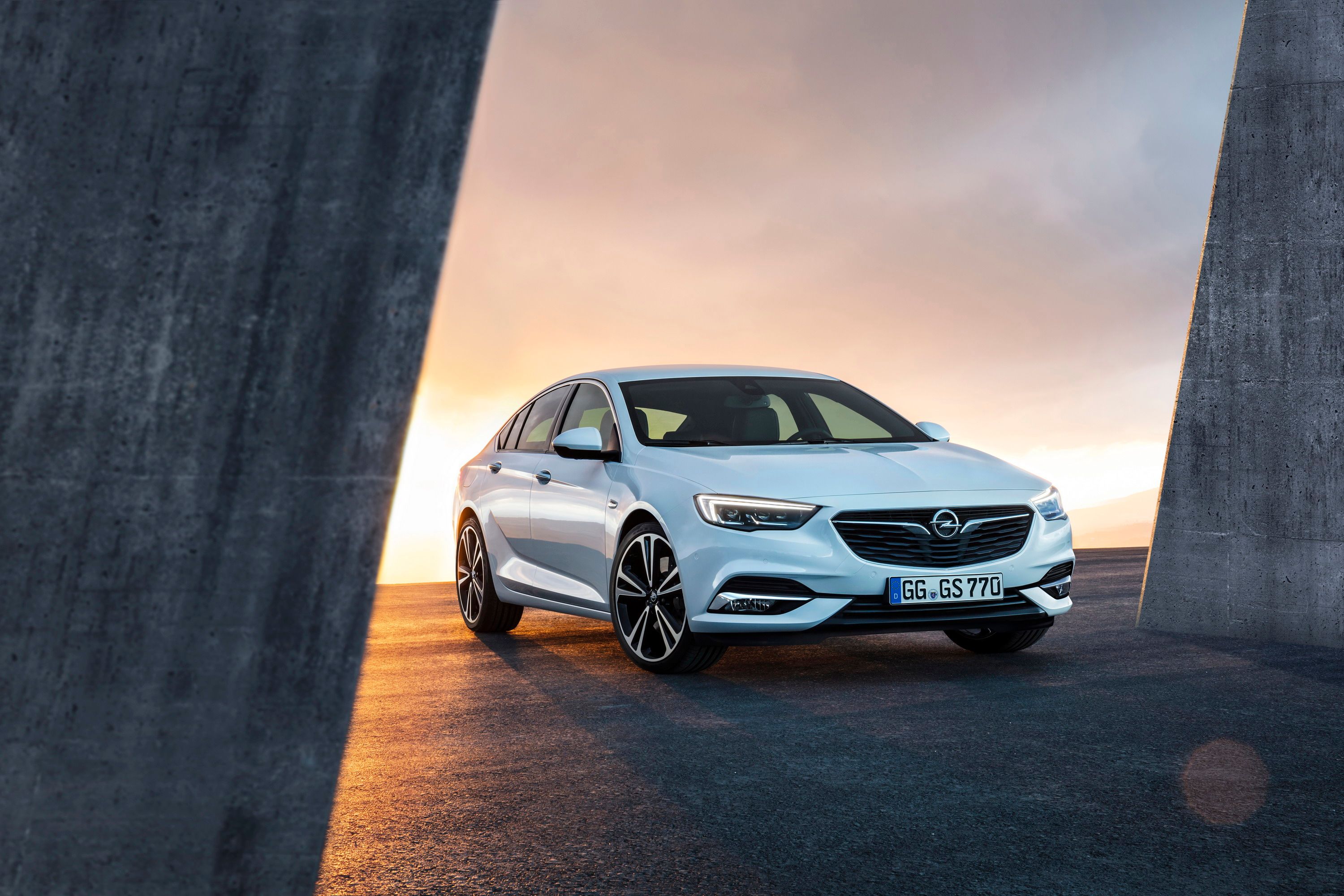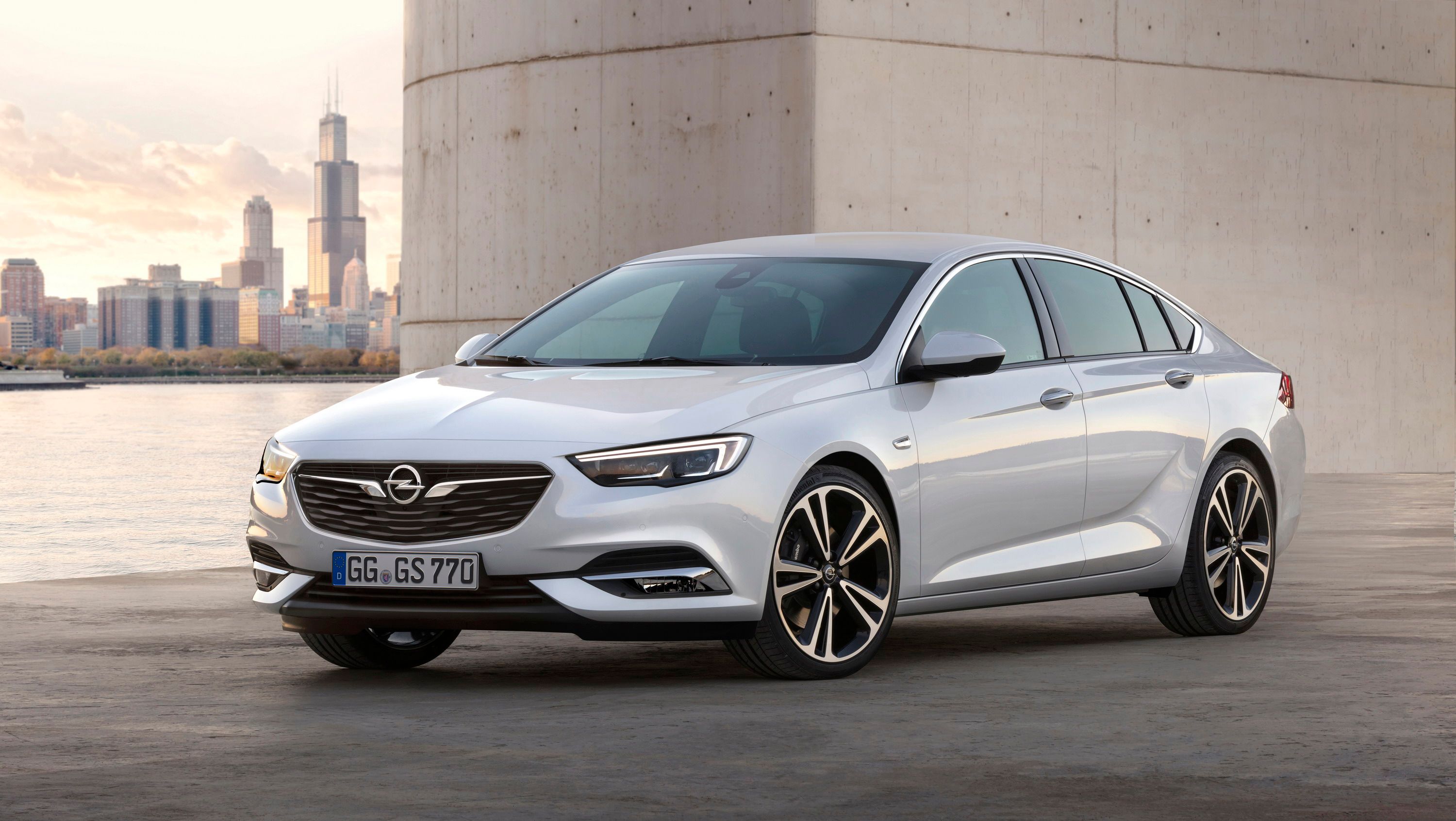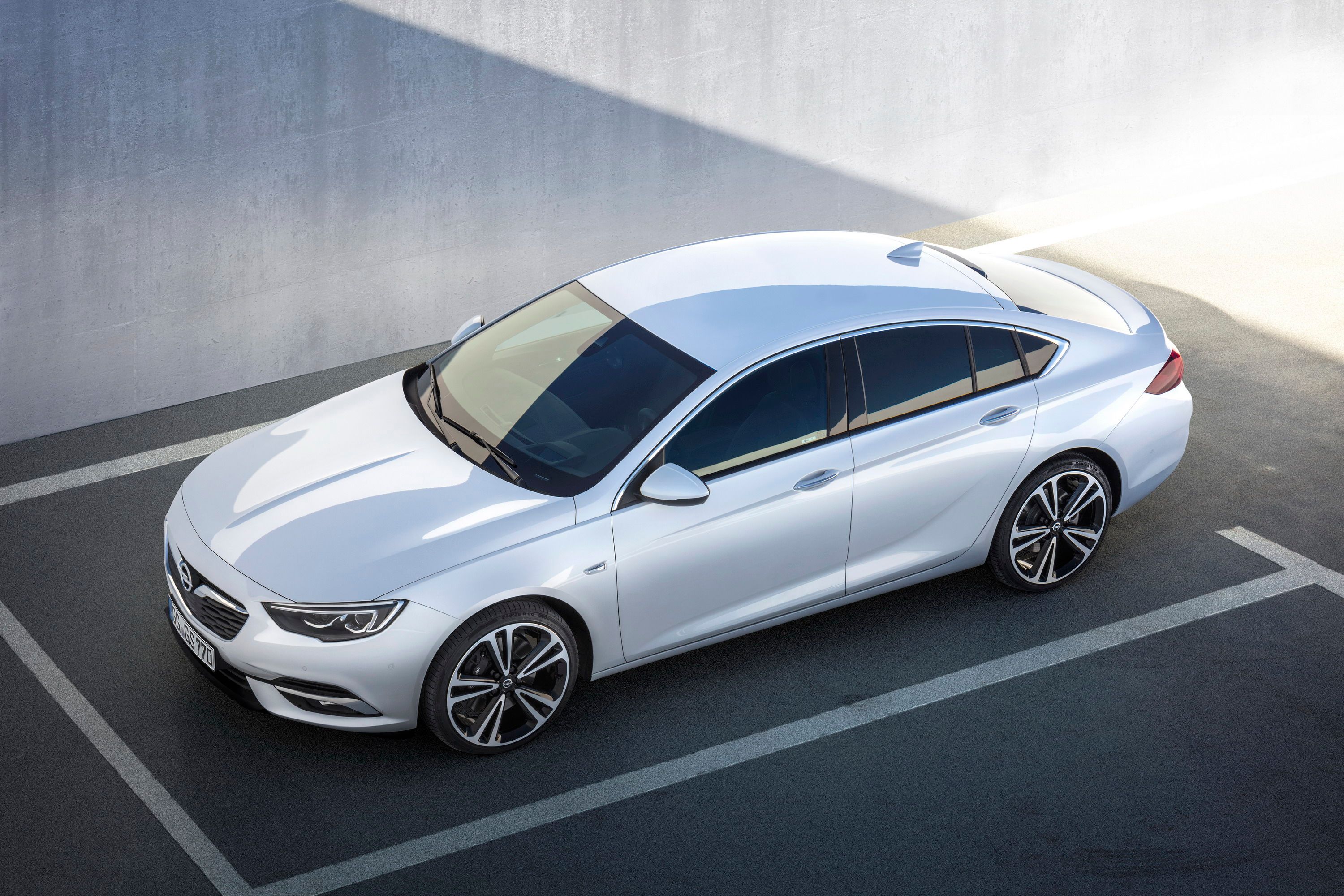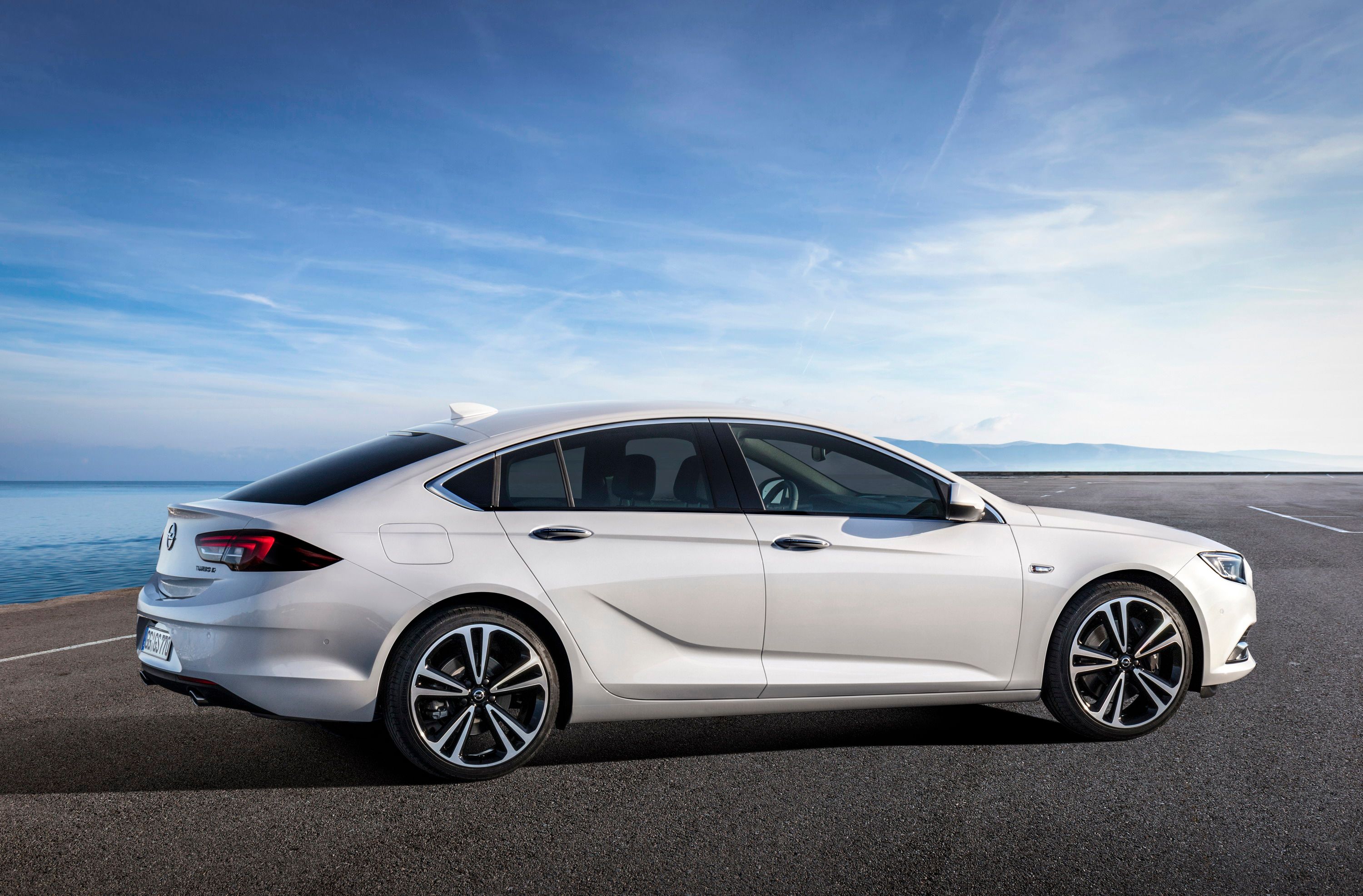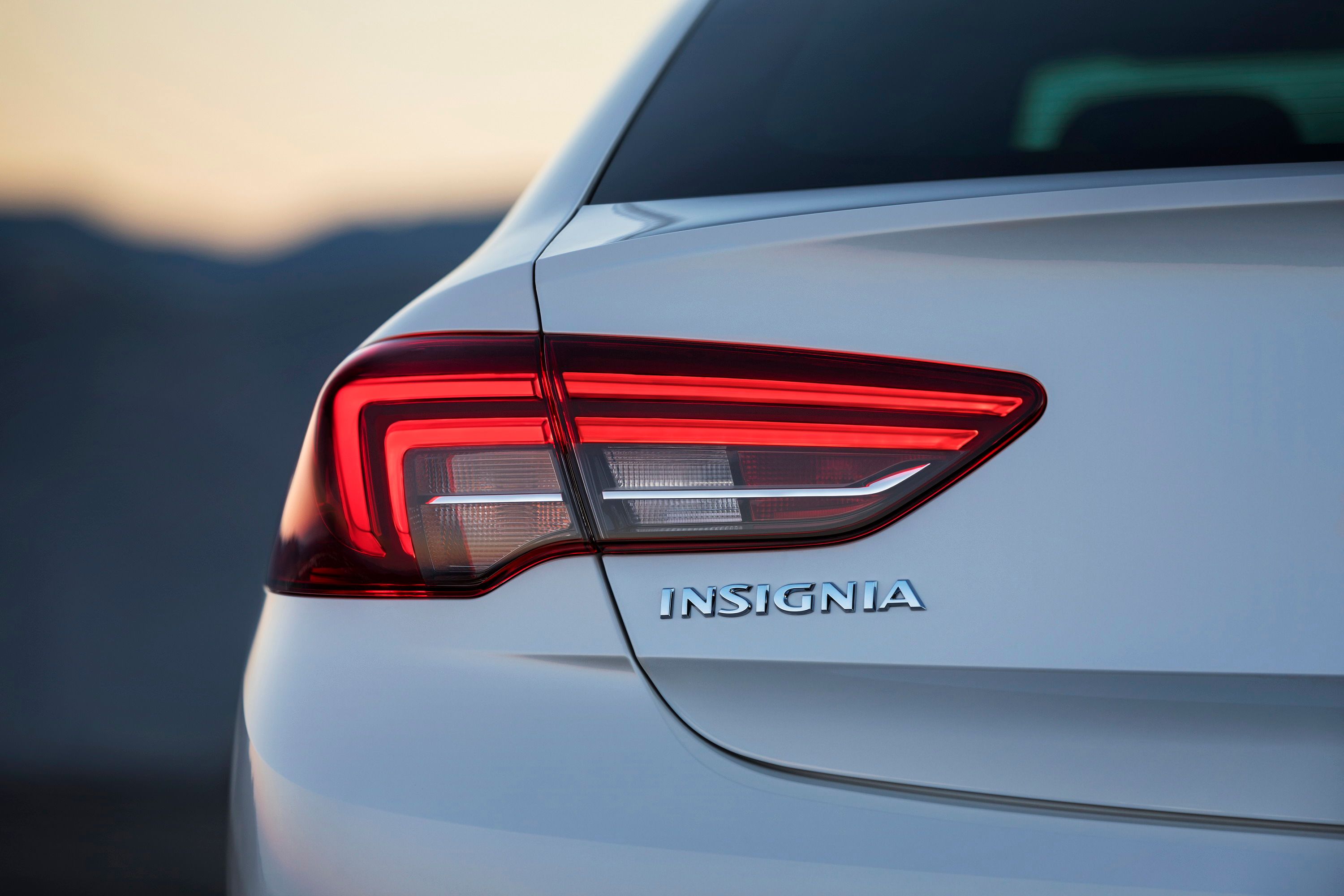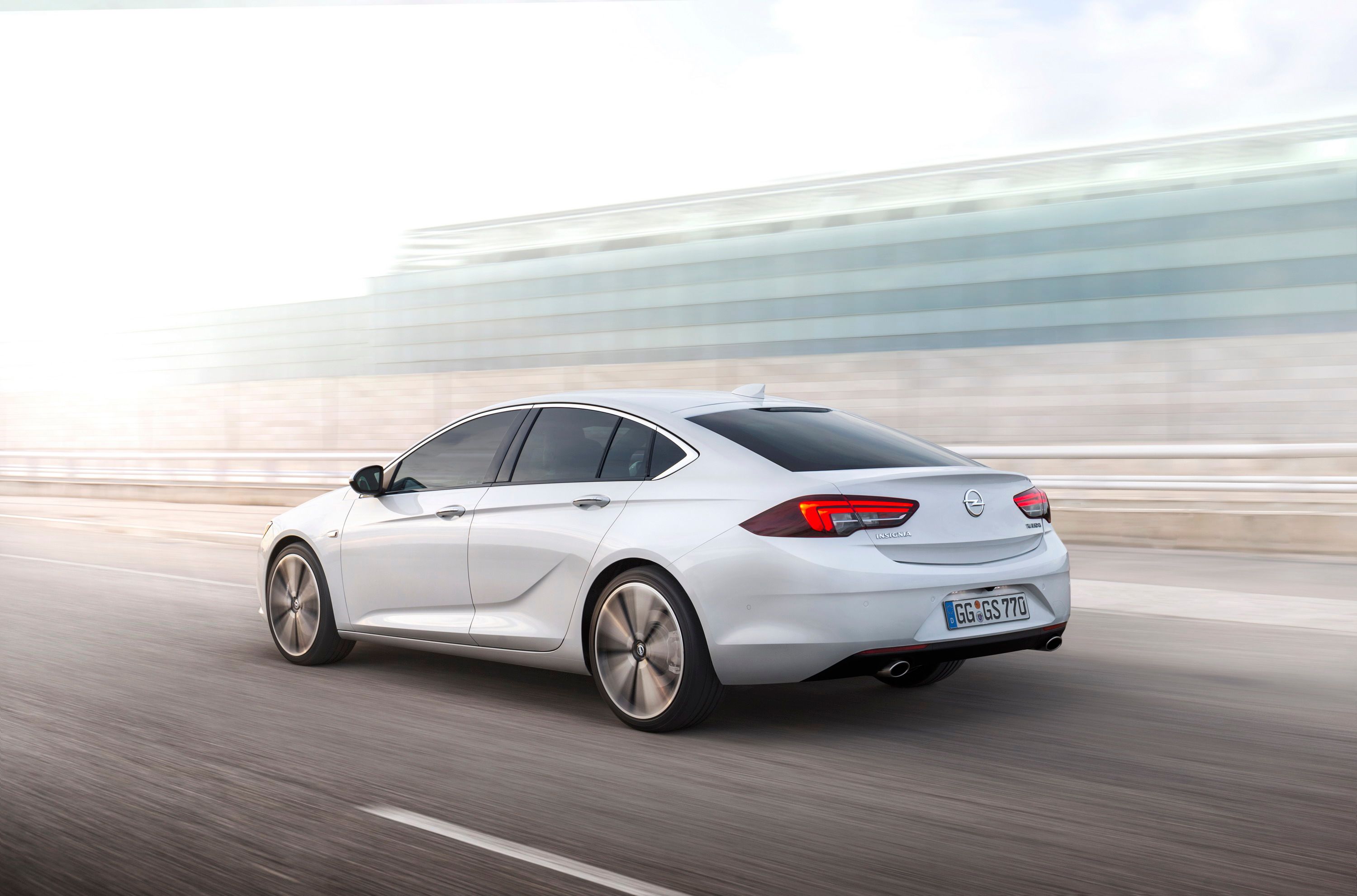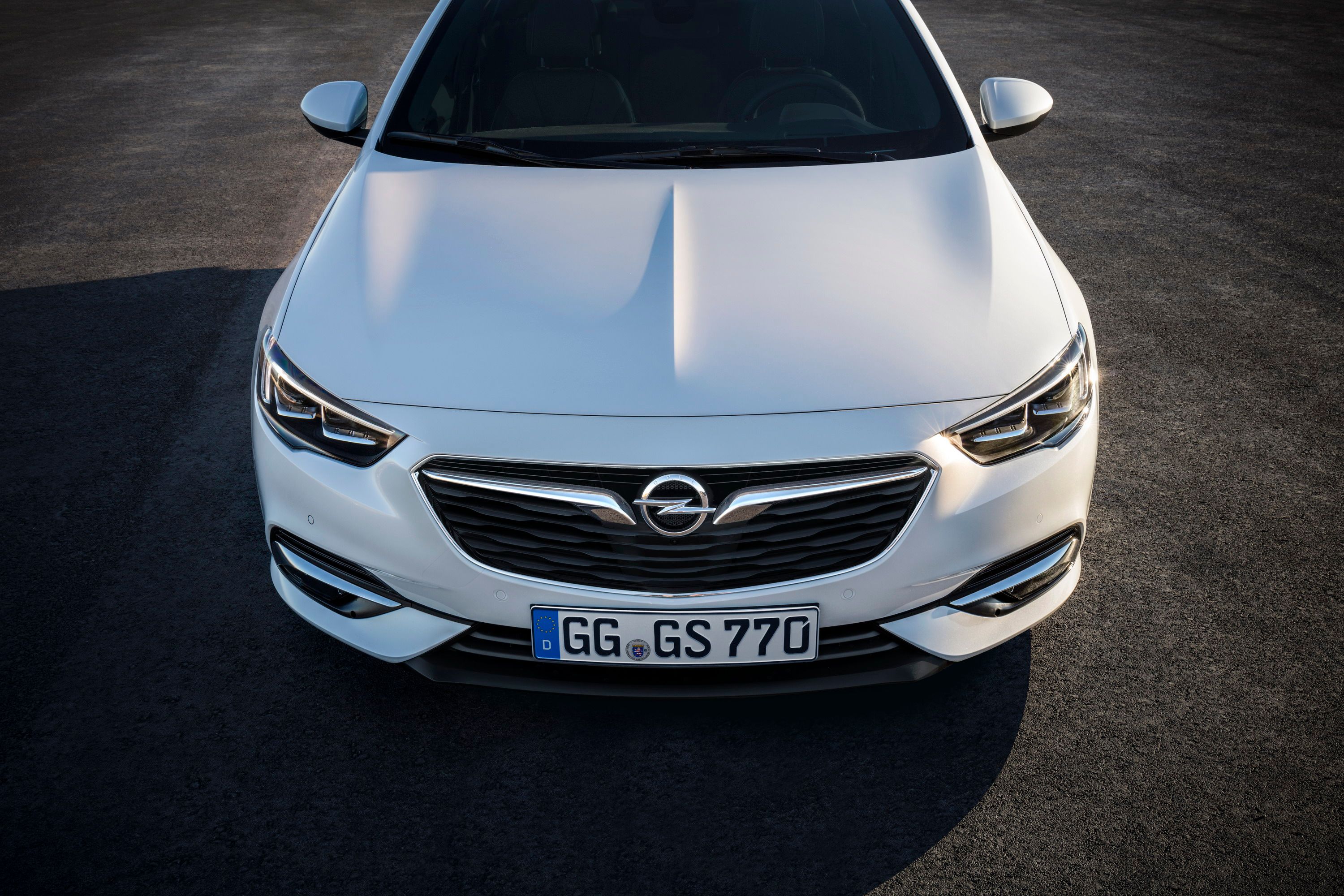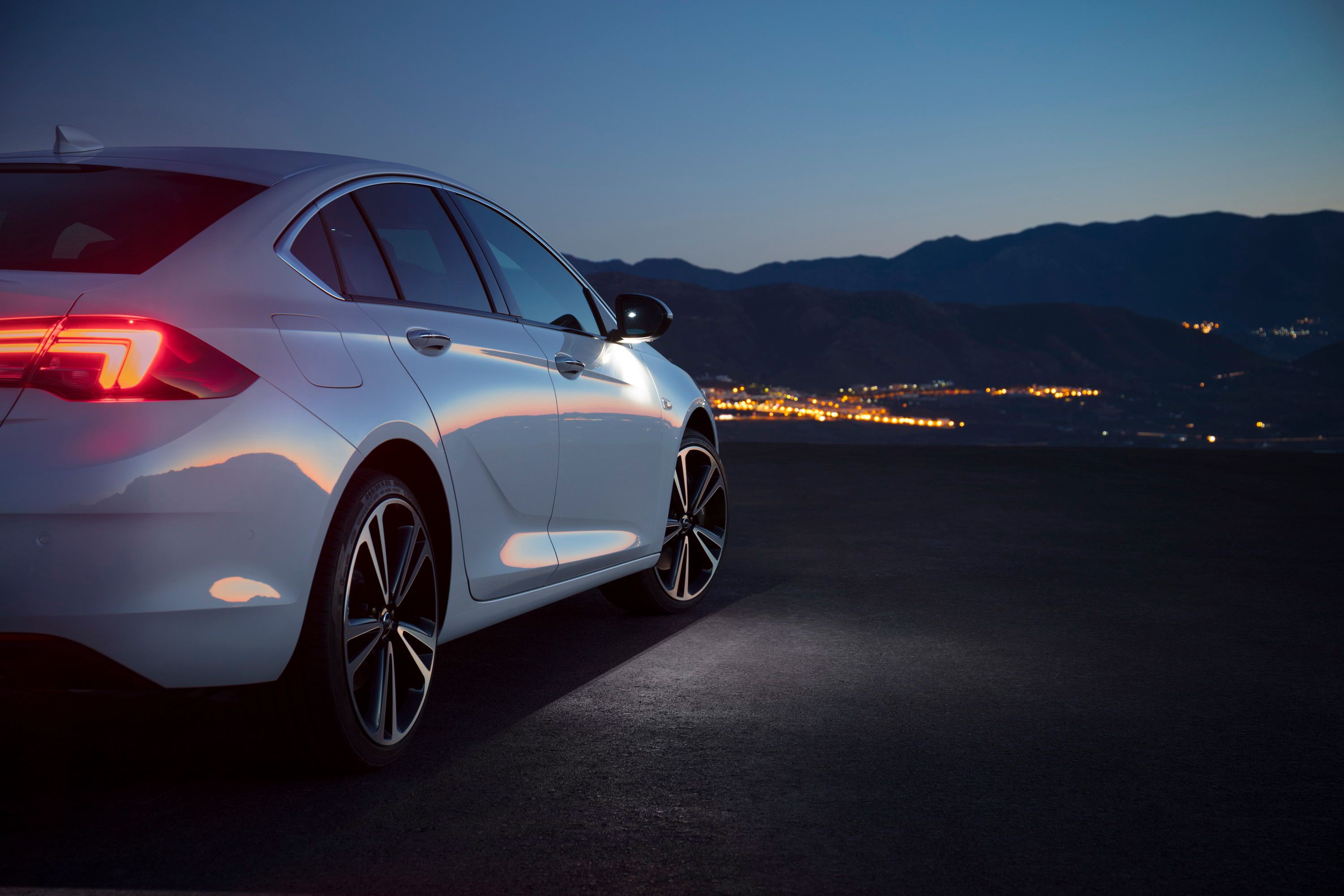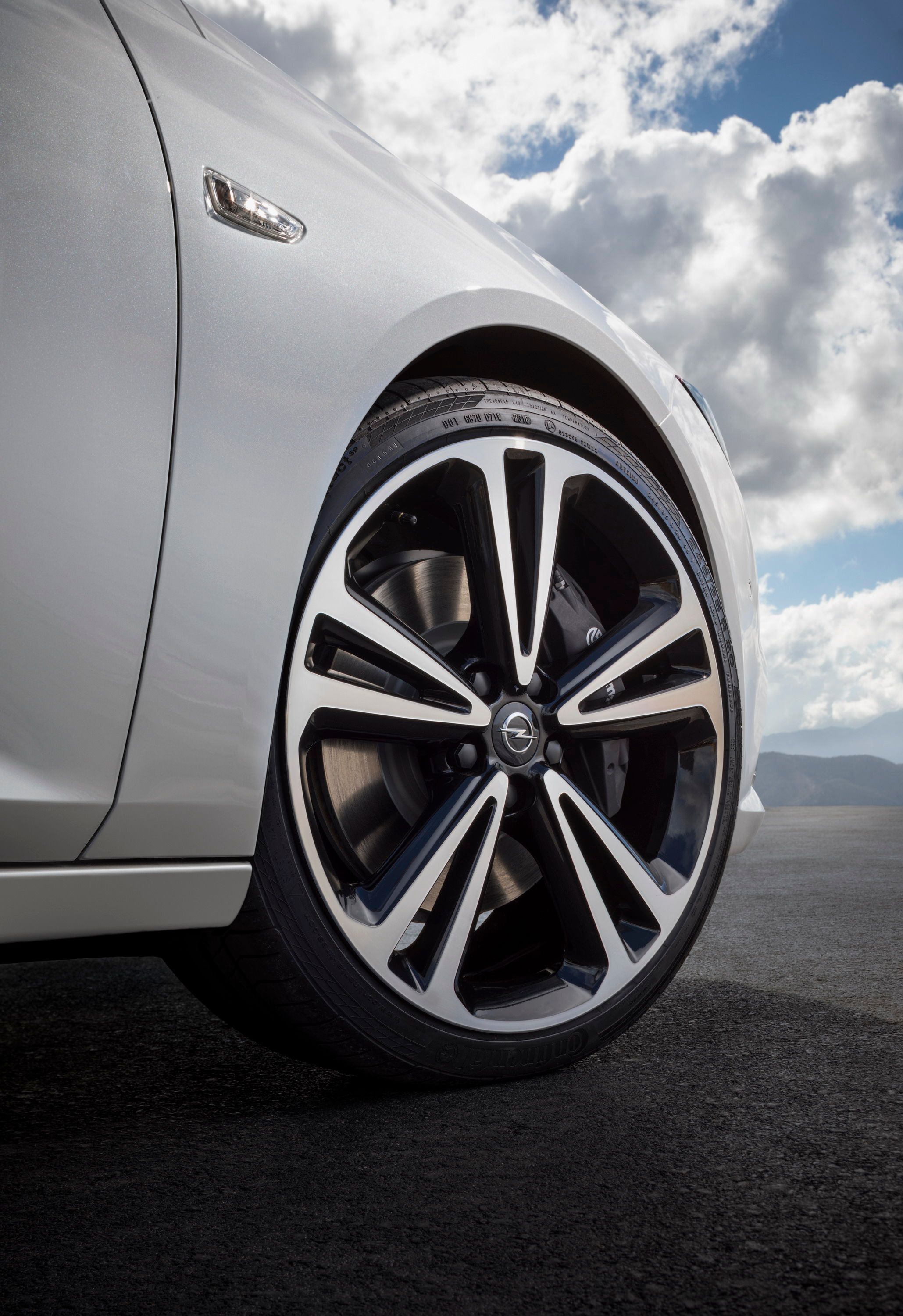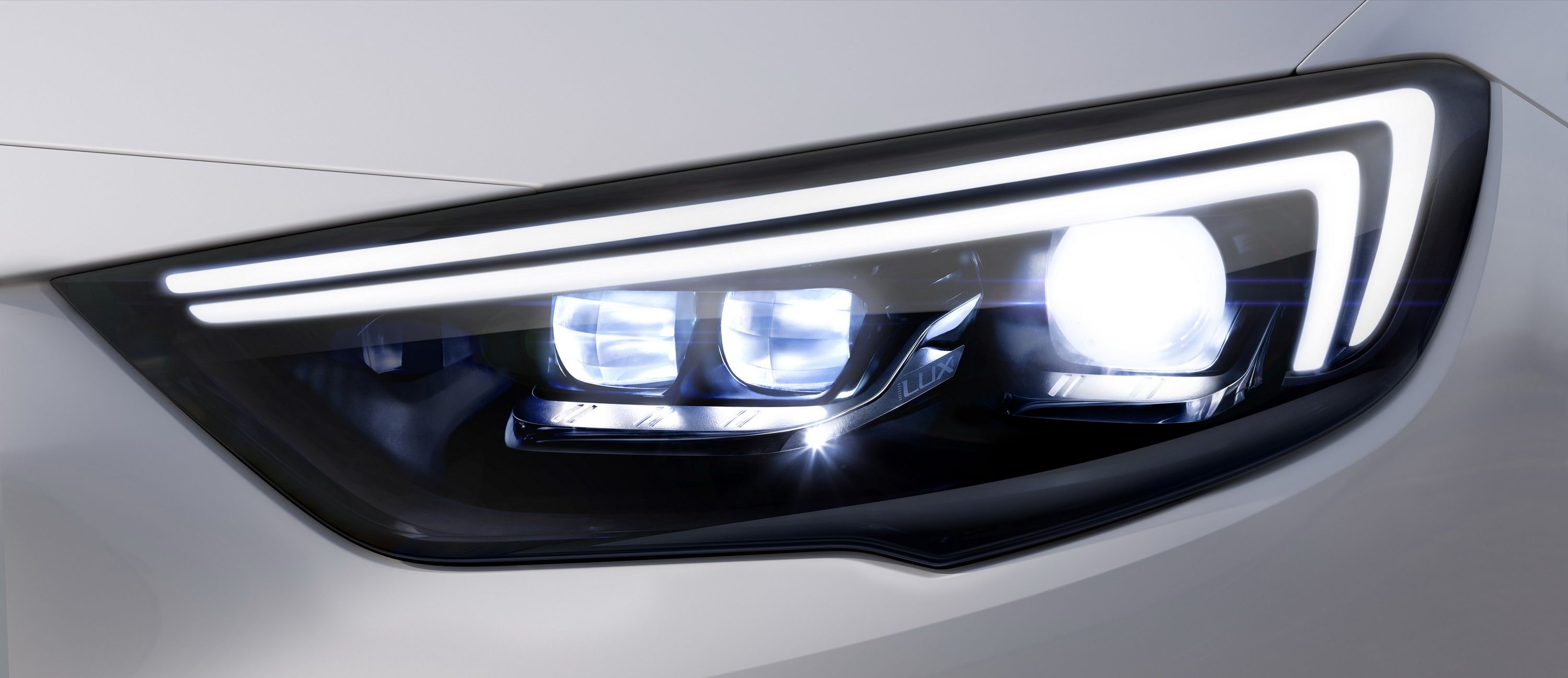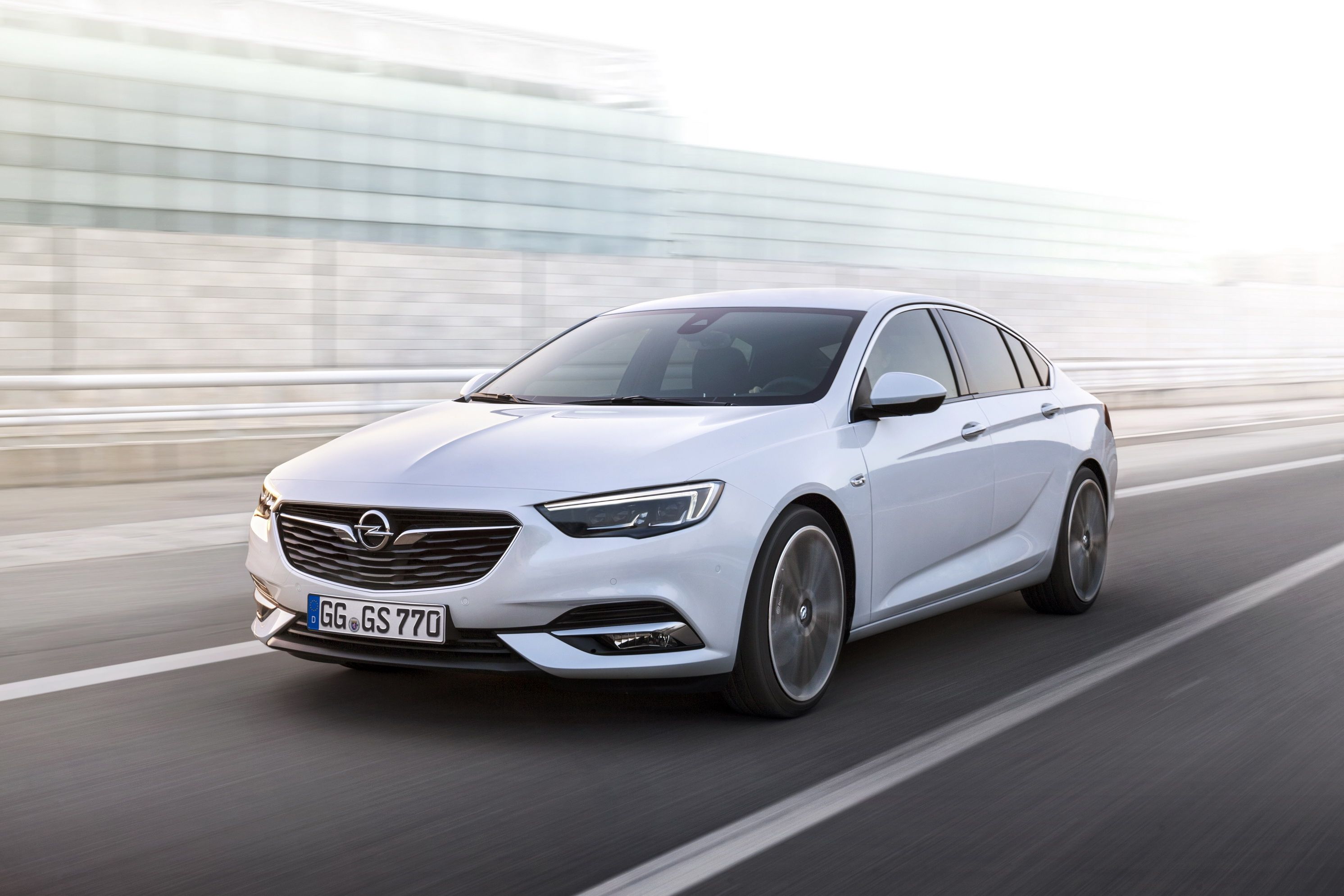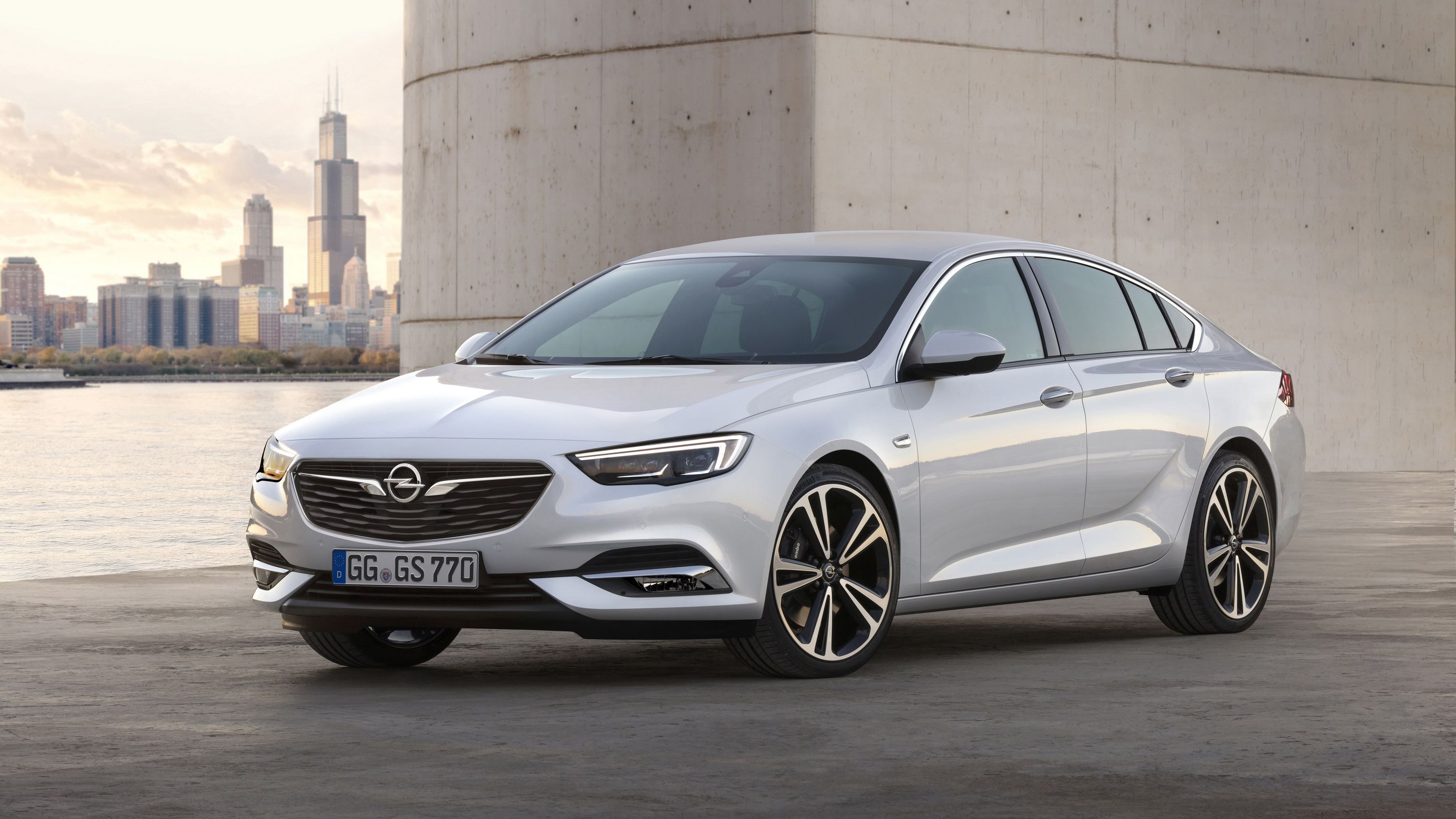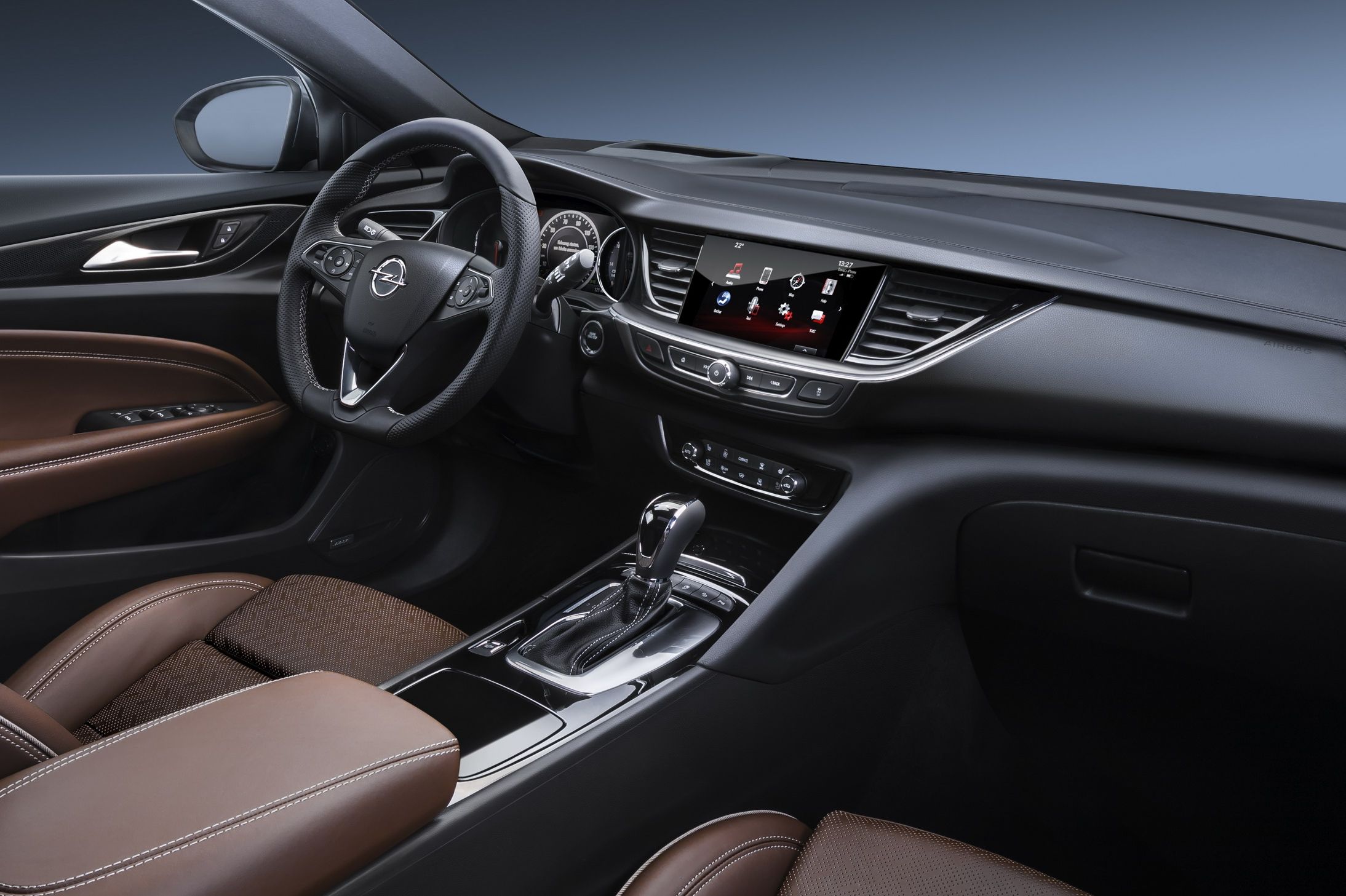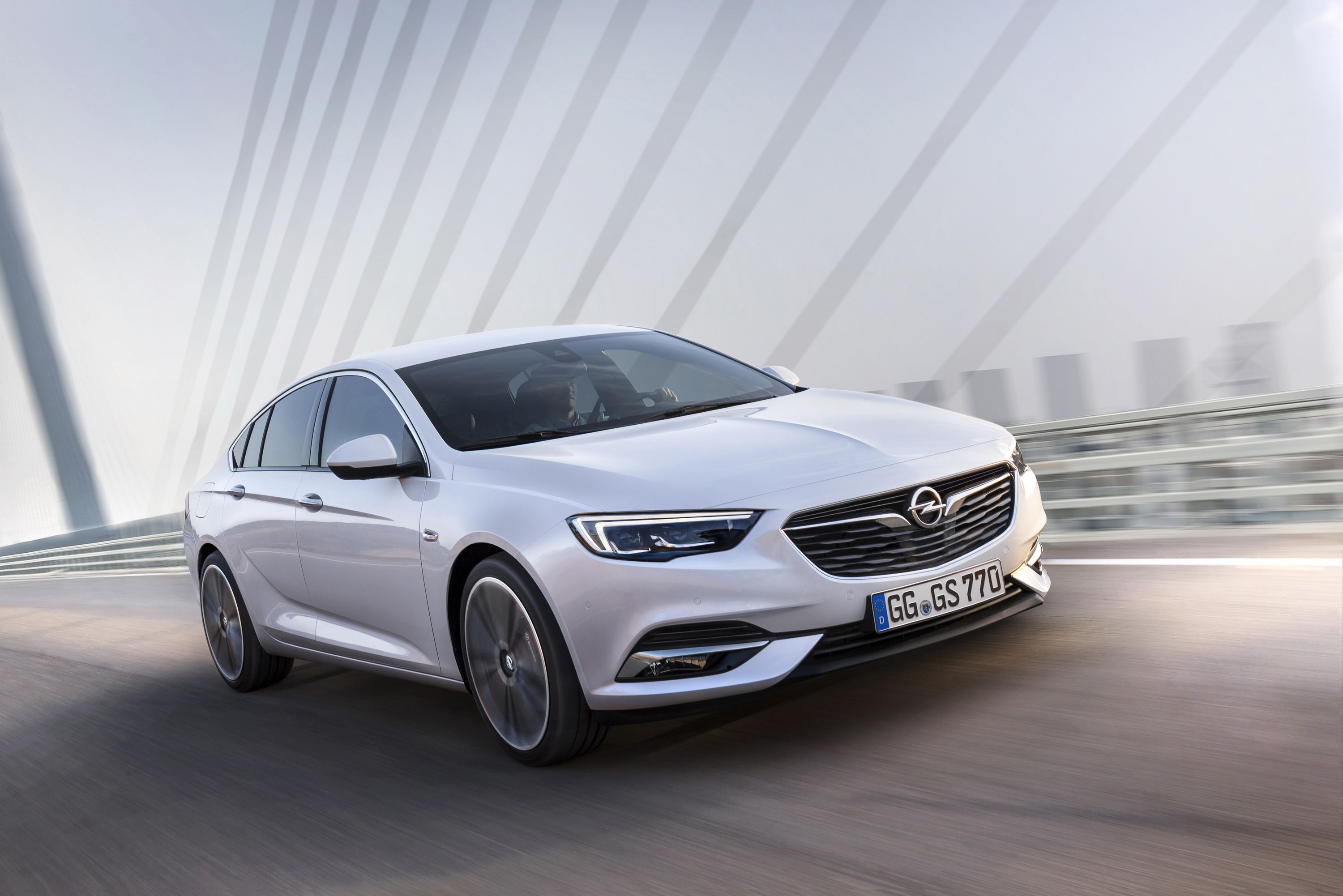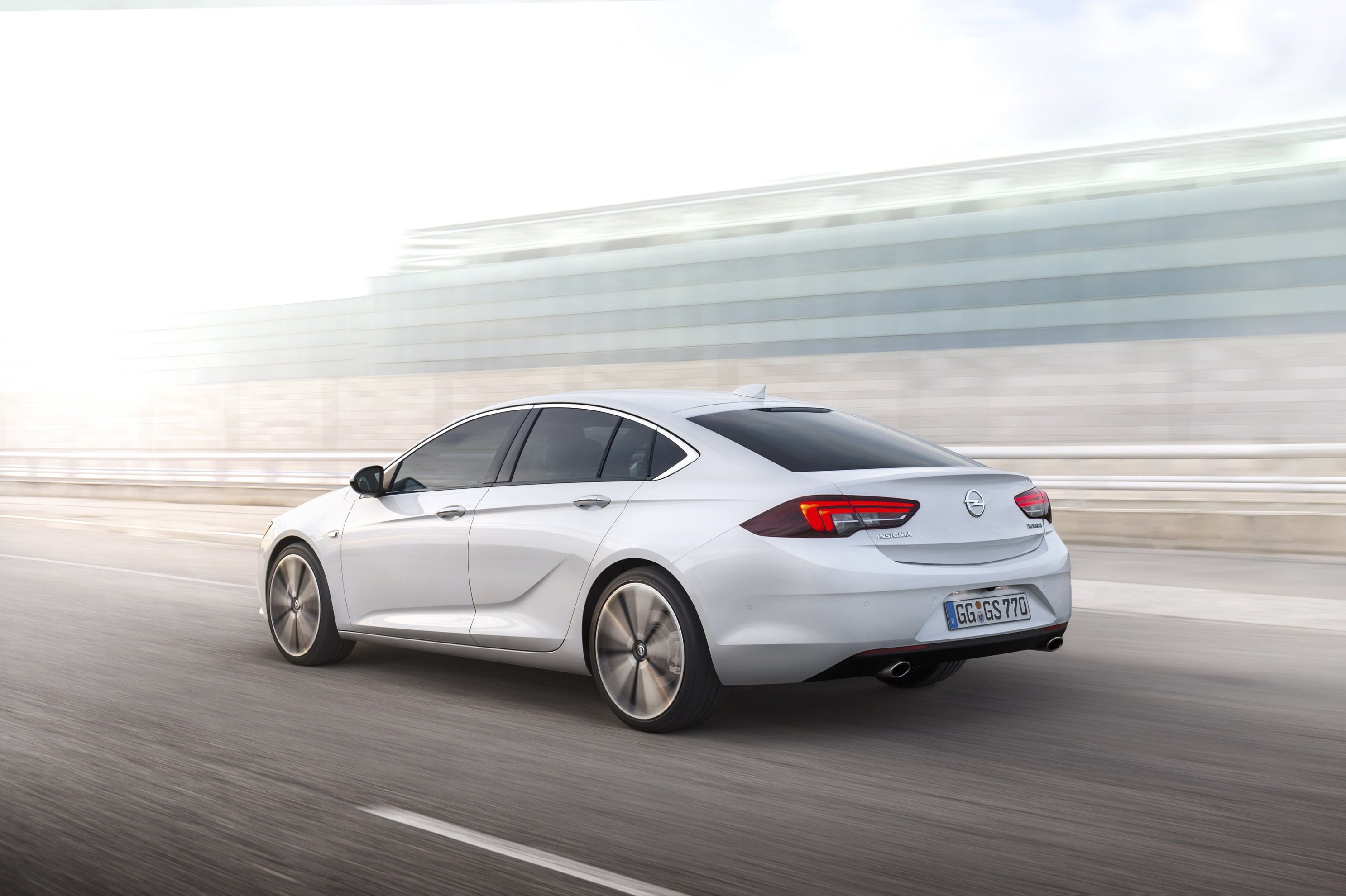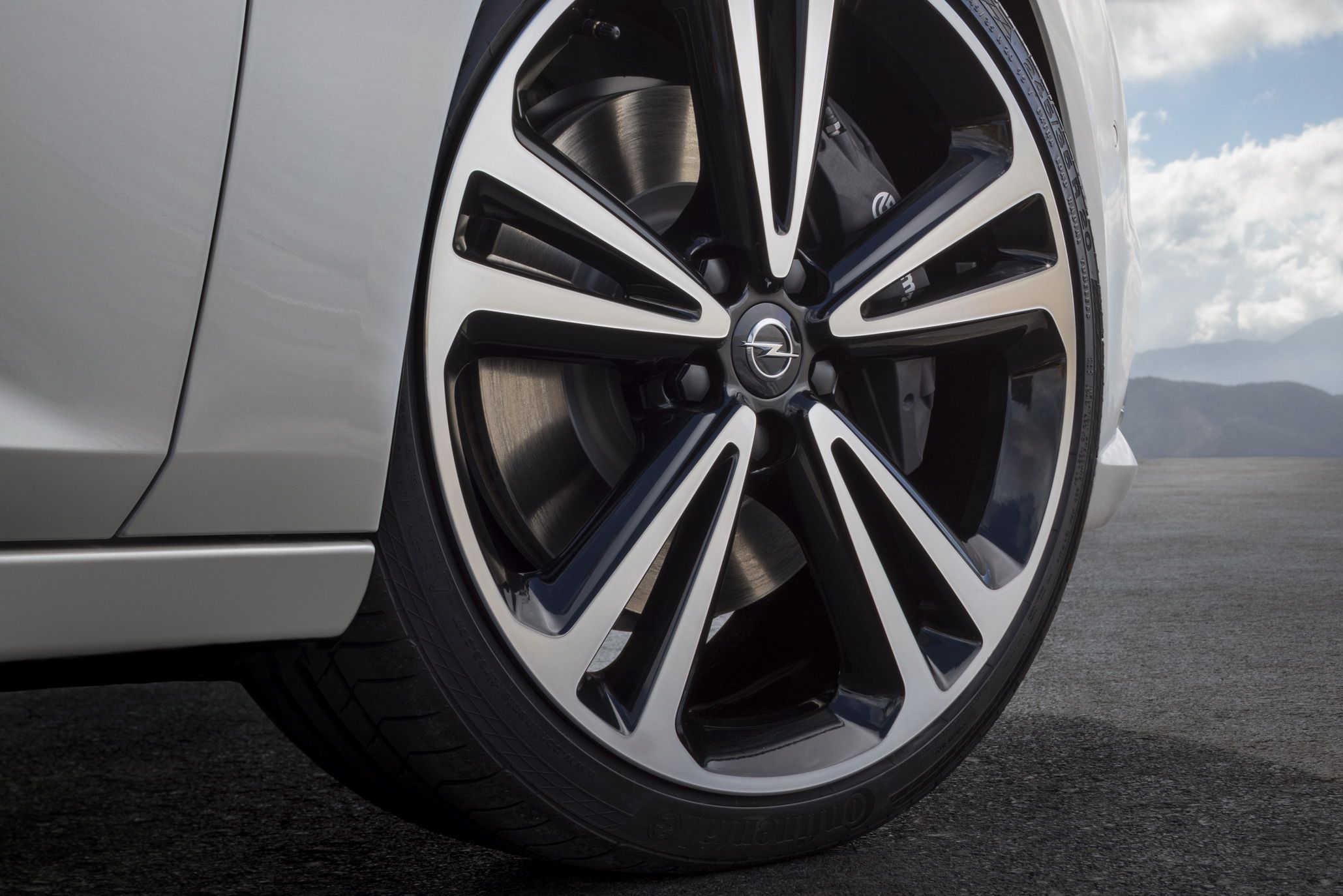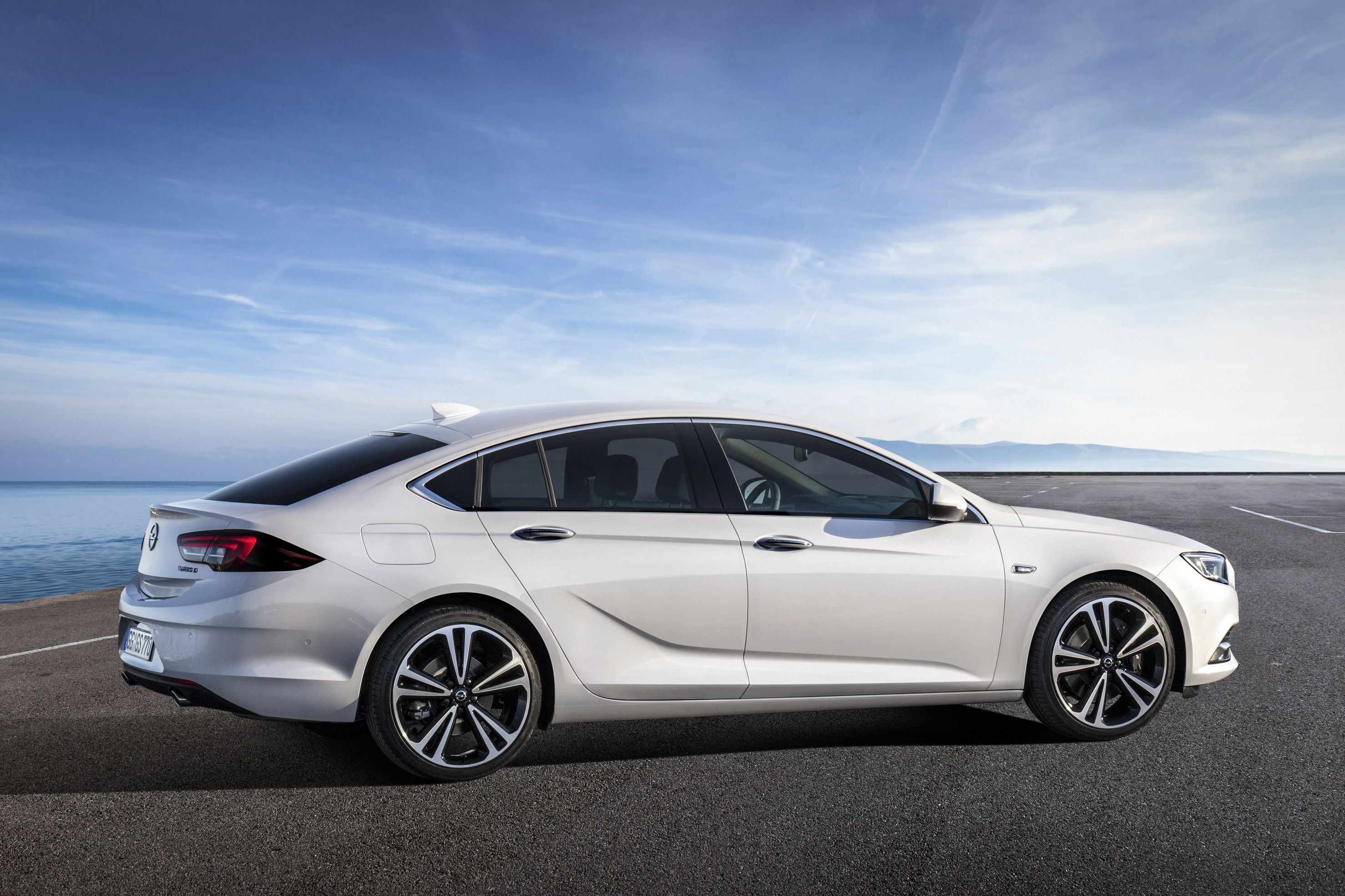When it comes to major automotive offerings from Germany, Opel isn’t usually the first name to pop up. But it isn’t for lack of trying – the brand is well established across several international markets, with its flagship Insignia sedan leading the charge, packing premium touches at a bargain price point. Originally unveiled in 2008 at the British International Motor Show, the mid-size Insignia hasn’t failed to make the sale, with over 900,000 units moved since its introduction and a variety of accolades awarded. Now, as we quickly approach 2017, Opel says it’s dead-set on launching 17 new models, including the new-generation Insignia. Boasting a lower curb weight, more technology, a new architecture, and new styling, Opel’s next-gen flagship clearly isn’t pulling any punches.
The whole thing draws heavily from the brand’s Monza Concept, revealed in 2013 at the Frankfurt Motor Show. The new Insignia is tasked with introducing the production side of Opel’s latest design philosophy evolution, and as such, it’s adopting a new name – Grand Sport.
It’s a title that should only be reserved those models that offer superior comfort and style for the long haul, plus adequate (or more than adequate) prowess and speed when the feeling is right.
Does the new Insignia fit the bill? Well, one quick glance at the spec sheet suggests it’s at least heading in the right direction. And that’s a good thing, because the Insignia is much more than just an Opel – swap the badges and tweak some of the equipment, and it’s a Vauxhall in the U.K., a Holden Commodore in Australia, and a Buick Regal in China and the U.S.
That makes this car extremely important to several big names, not just Opel. But the question remains – does it have what it takes to get out of the shadow of the Big German Three?
Continue reading to learn more about the Opel Insignia Grand Sport.
2017 Opel Insignia Grand Sport
- Make: Array
- Model: 2017 Opel Insignia Grand Sport
- [do not use] Vehicle Model: Array
Exterior
Old Insignia (left) versus new Insignia (right)
To my eyes, the original Opel Insignia (pictured on the left) was not exactly the most brilliant piece of design to ever wear four wheels. Of course, it wasn’t ugly either – rather, it was just a touch too bland, offering uninspiring shapes and a character that never really managed to stand out from the crowd. The term “rental car” readily springs to mind.
By contrast, the new Open Insignia (pictured on the right) is a sight to behold. Drawing the majority of inspiration from the 2013 Monza Concept, the new Insignia is a huge improvement. Indeed, Opel even says the Monza Concept was present in studio as the designers went about penning the new Grand Sport model. “Their mission was to make the new Insignia look as upscale, slim and athletic as the concept car,” Opel says.
So far, so good. The new Insignia offers larger dimensions (more on that later), as well as restructured proportions, all of which lend it that “true flagship presence” referenced by Opel.
The car is wider, longer, and lower than before, and attempts to capture the sporty, aggressive nature of a high-end, RWD sports model, while simultaneously lending an air of top-shelf luxury cruiser. The proportions do away with a traditional three-box sedan approach, and instead adopt the ever-popular profile and roofline of a four-door coupe.
Let’s check out the styling features of the Insignia Grand Sport in a bit more detail. We find the new generation pulls the most from the original concept vehicle up front, with a wide, grinning grille (now lower than before), small and narrow headlights with upturned checkmark daytime running lights (a.k.a. a “double-wing LED signature”), and flared out creases in the lower bumper accentuated by polished metal.
It’s all quite horizontal and stretched, and it looks vastly sportier and more premium than the outgoing Insignia. In terms of proportions, the front axle looks as though it was pushed away from the cabin, adding an extra premium flare to the front half of the car.
Moving to the side, the Grand Sport’s coupe-like ambitions become obvious, as the roofline falls gently into the rear end in a gently sloping arc above the rear axle. The side window garnish now gets the usual chrome accents across the top half of the car, rather than the circular embellishments of the outgoing model. Keeping chrome across the top of the windows helps to accentuate the car’s roofline, a move that’s subtle, but effective.
Lower in the flanks is a “’blade’ light catcher” character line that starts below the A-pillars and ends up in the rear doors. This adds a little extra visual beefiness to the car’s rear end, suggesting a raked stance and its associated sportiness.
In back, the shape of the front grille is repeated in the trunk lid, while the shape of the headlights is repeated in the taillights. The taillights also get the slim, “double-wing” treatment, accentuating the car’s visual width, plus they come with LED lighting elements. There’s also a new center LED stop light placed higher up on the roofline. Lower in the bumper, there are dual circular exhaust outlets framed in black.
Onto the underpinnings. If it looks like the new Insignia has grown, it’s because it has, with an extra 92 mm (3.6 inches) added to the wheelbase. The car’s overall length has increased as well, now up to 4,897 mm (192.8 inches) overall, a gain of 67 mm (2.6 inches) total. Opel calls it “marginal growth.”
To help bolster its attempts at sporty visuals, Opel also decreased front and rear overhangs (exact numbers on this were not provided), while the track was widened by 11 mm (0.4 inches), which should help the thing handle a little better as well. What’s more, the roofline was lowered by 29 mm (1.1 inches).
Not only is the whole thing quite shapely, it’s also surprisingly aerodynamic, boasting a drag coefficient of 0.26. For reference, the 2017 Toyota Prius Prime has a Cd of 0.25.
My Impression
I totally understand Opel’s approach for the new Insignia. The whole four-door coupe look is still all the rage, and it certainly works well on this model.
It’s a clean design, one that should resonate with buyers much more effectively than the outgoing styling. Old three-box sedans are out, while coupe rooflines are in.
The character lines in the profile and the creases in the fenders and hood complement the look, adding character without too much clutter. I also like the slight upturn in the trunk – once again, it’s sporty, but not overly aggressive or busy.
But I’m finding some fault with the front. The nose on the Monza Concept looks fantastic, with its huge side intakes and elegant creases, while the Grand Sport is a little too much of a compromise, especially in the lower bumper wings. The grille looks a bit like a Mazda, while the headlights look like an Audi.
But beyond this nitpicking, I think Opel did a great job refreshing the look of its flagship. The look does indeed find a nice mix between sportiness and elegance, and although it’s not perfect, it’s still a remarkable improvement over the outgoing model.
As a side note, expect this sedan to spawn an upcoming wagon body style as well, and, if rumors are to be believed, us ‘Mericans may very well see it turn up in Buick dealerships sometime in the future.
Opel Monza Concept pictured here.
And that’s very exciting news indeed. Extend that roof even further and give it a nice, round tail (you know, something like Monza Concept, pictured above), and the Insignia’s new design will gain even more pop.
|
Opel Insignia |
Opel Insignia Grand Sport |
|
|
Wheelbase (Inches) |
114.8 |
118.4 |
|
Length (Inches) |
189.1 |
192.8 |
|
Width (Inches) |
75.4 |
75.8 |
|
Height (Inches) |
55.7 |
54.6 |
Competition
Opel Insignia Grand Sport pictured center, Audi A4 pictured left, BMW 4 Series pictured right.
Some of the Opel Insignia Grand Sport’s biggest competition will come from rival makes Audi and BMW, which arrive in the segment with the A4 and 3 Series, respectively.
Let’s start with the Four Ring brand, which just introduced a fifth generation of the A4 last year (pictured on the left). While Audi has traditionally been known for its … methodical approach to styling updates, the new A4 still looks modern and sharp. Emphasis on sharp – every angle of the new model year was filed down, and the angles offer abrupt cuts front to back. We see this prominently in the front end, where the enormous singleframe grille dominates. Meanwhile, the LED headlights look similar to the Opel’s forward-facing illumination. The profile and tail of the Audi look more traditional than the Opel, but certainly no less handsome. Finally, it should be noted that the A4 looks to be the most aero efficient deign in class, besting the Opel with a drag coefficient of just 0.23.
Now for the Bimmer (pictured on the right). The 3 Series has traditionally been a good example of the classic BMW look, and although it’s seen a few updates over the years, the basics remain the same – wide and low for the front end, kidney grille in the nose, conventional three-box profile, and high rear haunches. The latest Bavarian creation is no different, and although it’s debatable which car (BMW or Opel) is the prettier machine, the BMW still carries that inescapable Bavarian presence and panache. And perhaps it’s for that reason that I give the aesthetic sportiness nod to BMW.
However, I’d still consider the Opel the more “elegant” design, as it doesn’t have the “fussiness” and busy details present across the BMW’s body panels. All those little cuts and swoops and details on the 3 Series add some nice aggression, but I prefer the simplicity of the Insignia when it comes to polish and sophistication.
|
Audi A4 |
BMW 3 Series |
Opel Insignia Grand Sport |
|
|
Wheelbase (Inches) |
111 |
110.62 |
118.4 |
|
Length (Inches) |
186.1 |
182.4 |
192.8 |
|
Width (Inches) |
72.5 |
71.29 |
75.8 |
|
Wheelbase (Inches) |
56.2 |
56.25 |
54.6 |
Interior
Old Insignia (left) versus new Insignia (right).
Like the car’s exterior styling, the interior of the outgoing Insignia (pictured on the left) looks like it’s about 10 years behind the times. The design is all upright and tall panels, with a vast band of hard buttons and knobs and a tiny touchscreen.
By comparison, the new Insignia (pictured on the right) is wide, minimalist, and hugely improved. Opel once again looked to the Monza Concept for inspiration inside the car, and although the production version isn’t quite as jaw dropping as what debuted in 2013, it still shows remarkable progress.
Opel Monza Concept pictured here.
The overarching design philosophy Opel used when drawing up the new interior was “sculptural artistry meets German precision,” which apparently include s a “slim, embracing dashboard.” Basically, this boils down to lots of horizontal lines, giving the whole car a more spacious feel. The surfaces have a look that says “carved by hand” rather than “pressed from a mold,” and the whole design is as clean in its layout as the exterior body panels.
The climate control vents are now horizontal, rather than vertical, while the steering wheel gets a three-spoke design with a flat bottom and rounded handgrips at the 10 and 2 positions. The design is also slightly asymmetric, emphasizing the driver’s seat through the positioning of the controls.
What’s more, Opel contends it used copious high-end materials and soft-touch surfaces throughout, although specifics on what was used and where are still forthcoming. However, from the press photos, we see what appears to be creamy leather applied to the seats, center armrest, door arm rests, and the door panels. Contrast stitching is heavily utilized in each of these applications. There’s also brushed metal trim in the door handles, shifter surround, vent surrounds, and control surrounds, plus some piano black paneling in the central tunnel.
The new horizontal layout pays dividends in terms of visual width, but real, measurable gains courtesy of the Insignia Grand Sport’s new platform can be found on the rear bench. Opel says rear-seated passengers will now enjoy lots of extra space due to the lengthened wheelbase, with up to 32 mm (1.26 inches) of extra hip room, 25 mm (0.98 inches) of extra shoulder room, and an additional 25 mm of extra knee room.
But when you consider how the Insignia Grand Sport gets a lower roofline, you’d be forgiven for thinking there’s an equal loss to the rear headroom. Not so – surprisingly, rear passengers actually Opel Monza Concept pictured here. an extra 8 mm (0.31 inches).
This is partly thanks to the lower seating position, with passengers now sitting 3 cm (1.18 inches) lower than they did in the outgoing Insignia. Opel also says this lower seating position helps to maximize driver engagement, as pilots should now feel as though they are sitting “in” the car, as opposed to “on” it.
Speaking of seating, Opel boasts that the new Insignia Grand Sport is equipped AGR-certified premium seating. In case you’re unaware (I certainly was), AGR stands for Aktion Gesunder Rucken, which translates roughly as “Action Healthy Back.” AGR is basically a German-based research group focused on the prevention of back pain. AGR only hands out its seal of approval to a very select number of automakers, which, according to the group’s website here., includes Genesis, Mercedes-Benz, and VW. Amongst these automakers, only a handful of models make the cut.
That means the seats should be both comfortable and supportive, aspects that passengers can tweak via standard electric adjustments and side bolsters, plus a memory function. Further features include a massage function, plus ventilation.
A heating function is offered for both front and rear passengers, although the extra warm is only available on the two outboard seating positions in back.
So it’s big and comfortable inside, by the sound of it. But modern luxury cars need a lot more than that if they’re gonna hang with the big boys – they also need to have some serious infotainment chops.
As such, the new Insignia Grand Sport gets the latest connectivity features offered by GM’s IntelliLink and OnStar system. Included is the newly released Personal Assistant service. Essentially, this service allows users to directly contact an OnStar “advisor,” who will help to manage logistics like finding a hotel and reserving a room.
The infotainment system also includes a 4G LTE Wi-Fi hotspot, which allows “all occupants” access to the web on their respective devices. Presumably, this means up to seven devices at once, as that’s the cap for the system in Buick’s cars.
In terms of button layout and controls for the infotainment, Opel says it moved a large number of feature controls to the center-mounted, frameless touchscreen. The goal was to reduce the number of hard buttons present in the dash, while simultaneously not overloading the touchscreen navigation with too many sub-menus and a confusing UI. The hard buttons that remain are mounted in three specific “zones,” with the upper portion of the center stack reserved for the infotainment system, the center portion used for the climate control, and the lower section for the driver assist features. Overall, I’d agree that Opel managed to incorporate just the right number of hard buttons, while maintaining a clean feel to the layout.
Behind the flat-bottom steering wheel is what would appear to be a digital gauge cluster. More information for the driver is provided by a new heads-up display, which projects stuff like the current road speed, traffic sign information, speed limiter settings, and navigation into the driver’s periphery.
Opel also mentions that the Insignia Grand Sport receives a heated windshield, but it doesn’t appear to differ in its function from a regular defroster.
In terms of practicality, the trunk volume is between 490 liters (17.3 cubic feet) with the rear seats up and 1,450 liters (51.2 cubic feet) with the rear seats down. While certainly a good amount of space, those figures are down compared to the outgoing model, which according to carbuyer.co.uk received 530 liters (18.7 cubic feet) with the seats up and 1,470 liters (51.9 cubic feet) of space with the seats down.
Of course, if it’s a large amount of cargo space you’re after, the wagon model is surely the one to wait for.
Competition
gain
Clearly, the new Insignia’s interior is vastly improved compared to the old model. But how does it stack up against heavy-hitters like the Audi A4 and BMW 3 Series?
Starting with the Audi (pictured on the left), the Opel Insignia Grand Sport doesn’t appear to have the same character and flavor as the Audi. Whereas the Audi looks refined, boasting multiple levels of high-end materials, the Opel is a bit lackluster. There’s a definite feeling of “Audi-ness” looking at the A4, and the Opel doesn’t have anything particularly distinct to point to as its own.
It gets worse when you start digging into the onboard technology. Audi clearly took its time to bring the A4’s cabin up to spec with the latest generational changeover, which includes features like a new optional 8.3-inch color display mounted high on the dash. While some folks will undoubtedly prefer the in-dash design of the Opel, the Audi’s screen is still a high-quality unit. Then there’s the upscale Audi virtual cockpit, heads-up display, LED interior lighting, rear tablet entertainment, three-zone climate control, ten-speaker audio, and all the other usual connectivity gear (Wi-Fi, LTE connectivity, Bluetooth, etc.). Simply put, the Insignia is close, but doesn’t quite have an edge on the Audi.
And then there’s the BMW. Once again, the Bimmer offers more distinction than the understated Opel. The BMW still looks premium, but heaps on the goodies everywhere possible.
In truth, I prefer the Opel’s design over the BMW, because in my opinion, the Bavarians get a little heavy-handed with the control scheme. Still, all those buttons and knobs are in place to help control a plethora of features. Standard stuff includes Bluetooth, a USB connection, an iDrive system with a 6.5-inch center screen, ambient lighting, custom key memory settings, nine-speaker audio, SiriusXM radio and more.
The verdict? If the interior is where it counts the most, go Audi.
|
Audi A4 |
BMW 3 Series |
Opel Insignia Grand Sport |
|||
|
Opel Insignia Grand Sport pictured center, Audi A4 pictured left, BMW 3 Series pictured right.} |
38.9/37.4 |
40.3 |
TBA |
||
|
Audi A4 |
BMW 3 Series |
Opel Insignia Grand Sport |
41.3/35.7 |
42.0/35.1 |
TBA |
|
Headroom front/rear (inches) |
55.9/54.5 |
55.1/55.1 |
TBA |
||
|
Legroom, front/rear (inches) |
17.8/34.07 |
16.9/ |
17.3/51.2 |
Drivetrain
The outgoing Opel Grand Sport Insignia is equipped with a range of turbocharged inline four-cylinder engines, with both gasoline and diesel variants on offer. Displacement ranges from 1.4-liters to 2.0-liters, while output is between 138 horsepower and 247 horsepower. Both FWD and AWD options are available.
So far, Opel has not revealed what the new Insignia Grand Sport will be carrying under the hood, but the most obvious answer is an update to the usual boosted inline four-bangers. Both diesels and gas variants will be offered, and between the low-drag exterior and huge number of units slated for production, efficiency should see a sizable increase.
Performance will also most likely get an uptick, although the focus will most likely center on getting higher mpg, rather than higher mph. That said, if rumors are to be believed, a new turbocharged V-6 is heading down the pipeline as well. And that’s a very good thing, because after all, this is supposed to be a Grand Sport model, right? Look for the sportiest option to come from OPC (Opel Performance Center).
For the moment, there are a few solid details we can go on. For starters, the Opel Insignia will get FWD as standard on lower trims, while AWD will be offered as an available option. Go for the four-wheel grip, and you’ll get a drivetrain that uses two electrically controlled multi-plate clutches, rather than the traditional rear differential setup. More eagle-eyed readers will recognize this as similar to the hoon-happy Ford Focus RS, which is good news for anyone looking for a little extra nippiness from their Opel.
When it comes to cog swaps, Opel says it’s ushering in a new eight-speed automatic that’ll only be offered with AWD. Other gearbox options are less clear. Like the current model, a six-speed manual transmission is expected to comes as standard, while a nine-speed automatic might make an appearance sometime in the future.
|
Sport} |
|||||||||
|
Opel Insignia 1.8i |
Opel Insignia 1.4i |
Opel Insignia 2.0i Turbo |
Opel Insignia 1.6CDTi |
Opel Insignia 2.0CDTi |
1.8-liter four-cylinder |
1.4 liter four-cylinder |
2.0-liter four-cylinder |
1.6-liter four-cylinder |
2.0-liter four-cylinder |
|
Engine |
138 HP @ 6,300 RPM |
138 HP @ 4,900-6,000 RPM |
246 HP @ 5,300 RPM |
134 HP @ 3,500-4,000 RPM |
167 HP @ 3,500-4,000 RPM |
||||
|
Horsepower |
129 LB-FT @ 3,800 RPM |
147 Lb-FT @ 1,850-4,900 RPM |
295 LB-FT @ 2,500-4,000 RPM |
236 LB-FT @ 2,000 RPM |
295 LB-FT @ 1,750-2,500 RPM |
||||
|
CO2 emissions (g/km) |
169 |
124 |
169 |
109 |
118 |
||||
|
Torque |
5.6 |
4.3 |
5.8 |
3.8 |
3.8 |
Note: Current Opel Insignia engine options listed here
Competition
Audi A4 pictured on the left, BMW 3 Series pictured on the right.
When it comes to performance and fun, Audi and BMW have a few aces up their respective sleeves.
As for the A4 (pictured on the left), buyers get a range of turbocharged options to choose from, with both gas and diesel variants offered. The majority of the range is composed of 2.0-liter four-cylinders, including outputs of 187 horsepower and 249 horsepower for the gas units, and 148 horsepower and 187 horsepower for the diesels. On the gas side, there’s also a 1.4-liter four with 148 horsepower, while the top of the diesel range gets a 3.0-liter V-6 that spins to a tune of either 218 horsepower or 272 horsepower. Transmission options include a six-speed manual, as well as a seven-speed S-tronic automatic.
Clearly, if it’s speed you’re after, the Audi is the winner against the Opel – unless there’s a high-performance OPC variant in the works.
That said, the Bavarians still might be the better choice for driving fun. Starting off the Bimmer line is a 2.0-liter inline four-cylinder with 180 horsepower, followed by another 2.0-liter four-cylinder with 248 horsepower. Then there’s a 2.0-liter hybrid making 248 horsepower, plus a 2.0-liter diesel with 180 horsepower if you’re into oil burners. At the top is the 340i, which comes with a top-shelf six-cylinder making 320 horsepower.
Opt for the 340i, and you’re looking at a sprint to 60 mph in just 4.6 seconds, when paired with AWD.
|
Audi A4 1.4 TFSI |
Audi A4 2.0 TFSI ultra |
Audi A4 2.0 TFSI S tronic |
Audi A4 2.0 TDI |
Audi A4 2.0 TDI |
Audi A4 3.0 TDI S tronic |
||
|
Engine type |
1.4-liter Inline four-cylinder |
2.0-liter 4-cylinder inline spark-ignition 2.0-liter Inline 4-cylinder spark-ignition |
2.0-liter Inline four-cylinder diesel |
2.0-liter Inline four-cylinder diesel |
2.0-liter Inline four-cylinder diesel |
3.0-liter V-6 diesel |
|
|
Engine |
148 HP @ 5,000-6,000 RPM |
187 HP @ 4,200-6,000 RPM |
248 HP @ 5,000-6,000 RPM |
120 HP @ 3,500-4,000 RPM |
148 HP @ 3,250-4,200 RPM |
187 HP @ 3,800-4,200 RPM |
214 HP @ 4,000-5,000 RPM |
|
Horsepower |
184.4 LB-FT @ 1,500-3,500 RPM |
236 LB-FT @ 1,450-4,200 RPM |
272 LB-FT @ 1,600-4,500 RPM |
199 LB-FT @ 1,500-3,000 RPM |
236 LB-FT @ 1,500-3,250 RPM |
295 LB-FT @ 1,750-3,000 RPM |
295 LB-FT @ 1,250-3,750 RPM |
|
Horsepower |
8.7 |
7.2 |
6.3 |
10.2 |
8.9 |
7.7 |
6.6 |
|
Torque |
130 mph |
130 mph |
155 mph |
127 mph |
137 mph |
149 mph |
155 mph |
|
0-100 km/h (0-62.1 mph) seconds |
5.5 |
5.5 |
5.9 |
4.2 |
4.2 |
4.5 |
4.5 |
|
Top Speed |
2,910 Lbs |
3,042 Lbs |
3,152 Lbs |
3,152 Lbs |
3,152 Lbs |
3,196 Lbs |
3,395 |
|
Fuel consumption in l/100km |
|||||||||||||
|
Opel Insignia 1.8i |
Opel Insignia 1.4i |
Opel Insignia 2.0i Turbo |
Opel Insignia 1.6CDTi |
Opel Insignia 2.0CDTi |
2.0-liter inline four-cylinder |
2.0-liter inline four-cylinder |
1,5-liter three-cylinder |
2.0-liter inline four-cylinder |
2.0-liter inline four-cylinder |
3.0-liter 6-cylinder |
2.0-liter inline four-cylinder |
3.0-liter 6-cylinder |
3.0-liter 6-cylinder |
|
Engine |
113 HP @ 4,000 RPM |
148 HP @ 4,000 RPM |
134 HP @ 4,400 RPM |
160 HP @ 4,000 RPM |
181 HP @ 5,000 RPM |
254 HP @ 4,000 RPM |
248 HP @ 5,200 RPM |
308 HP @ 4,400 RPM |
321 HP @ 5,500 RPM |
||||
|
Horsepower |
199 Lb-FT @ 1,250-2,750 RPM |
236 LB-FT @ 1,500-3,000 RPM |
162 LB-FT @ 1,250-4,300 RPM |
295 LB-FT @ 1,750-2,250 RPM |
199 LB-FT @ 1,350-4,600 RPM |
413 LB-FT @ 1,500-3,000 RPM |
258 Lb-FT @ 1,450-4,800 RPM |
464 LB-FT @ 1,500-2,500 RPM |
331 LB-FT @ 1,380-5,000 RPM |
||||
|
Horsepower |
10.7 |
8.6 |
8.9 |
7.9 |
7.2 |
5.6 |
5.9 |
4.8 |
5.2 |
||||
|
Torque |
127 mph |
133 mph |
130 mph |
143 mph |
146 mph |
155 mph |
155 mph |
155 mph |
155 mph |
||||
|
Weight |
4.9 |
5.3 |
6.7 |
4.7 |
7.3 |
5.8 |
7.9 |
6.4 |
|||||
|
Top Speed |
3,295 Lbs |
3,317 Lbs |
3,251 Lbs |
3,295 Lbs |
3,317 Lbs |
3,560 Lbs |
3,406 Lbs |
3,758 Lbs |
3,538 Lbs |
Chassis And Handling
Underneath the skin, look for the Opel Insignia Grand Sport to be rocking GM’s new Epsilon E2XX platform, which is the same underpinnings used for the 2016 Chevrolet Malibu. As a replacement for the old Epsilon II platform, E2XX is focused on cutting out weight and lengthening the wheelbase, and will most likely see use across a wide range of body styles and drivetrains.
Part of the new platform’s appeal is the promise of more efficient packaging and the incorporation of more lightweight materials. According to Opel, these characteristics help to trim as much as 175 kg (386 pounds) from the car’s curb weight – quite impressive, and definitely enough of a diet to make a difference when it comes to things like mpg, handling, and straight-line performance. In fact, the new Insignia’s body-in-white configuration (that is, the manufacturing stage at which the car is composed solely of welded-together sheet metal, without the engine, drivetrain, interior, etc.) is 60 kg (132 pounds) lighter all by itself.
And while it’s doubtful anyone will be taking this model to the local autocross events, handling is still one consideration when talking about a car’s reduced curb weight. After all, a well-appointed sedan should still offer at least a little something if you decide to throw it a corner or two – especially with a name like “Grand Sport” glued to the bodywork.
To that end, the new Opel Insignia can get optioned with an advanced AWD system complete with torque vectoring technology.
In case you were unaware, torque vectoring sends power to the outside rear wheel while cornering, which helps to reduce all that annoying understeer that’s so common amongst AWD cars.
Other handling features include a sophisticated five-link rear suspension set-up, as well as an optional FlexRide chassis system.
Like other entries in this segment, the Insignia Grand Sport offers drivers a chance to fine-tune their experience behind the wheel using a slew of electronic gadgets. In this case, the system is dubbed FlexRide.
FlexRide includes new settings for the adaptable dampers, a sharpened or dulled throttle response, a quicker or slower steering ratio, a variety of settings for how much the electronic stability program (ESP) interferes with your inputs, and on models suitably equipped, new settings for the automatic transmission. Opel says these settings can be tweaked independently and to the driver’s taste, or alternatively, set more broadly following one of several preset modes (including “Standard,” “Sport,” or “Tour”).
Essentially, the system allows for either more comfort or more aggression with the touch of a button, which means easier cruising on the highway commute, or more fun in the bends on the weekend. There’s also Drive Mode Control software that will analyze date from onboard sensors, driver-set parameters, and even the driver’s driving style to appropriately set up the chassis.
Competition
While the Audi A4 (pictured on left) can be had with FWD, anyone looking for fun in the corners is gonna want to go with the AWD model. The Four Ring brand is well established as a marque with real AWD handling chops, and the A4 gets a few nice features to help underline this characteristic.
For starters, there are 13-inch disc brakes front and back, while the suspension utilizes five-link independent set-ups at both ends as well. The steering is a speed-sensitive electromechanical set-up. If desired, buyers can opt into 18-inch summer rubber at no charge, or go plus-sized with 19-inch wheels wrapped in 245/35 summer tires. There’s also the optional comfort adaptive dampening suspension package, which will lower the car’s ride height by 10 mm (0.39 inches), or the sport package, which in addition to adding some interior goodies (front sport seats, black cloth headliner, etc.) equips even sportier suspension that’ll drop the body by 23 mm (0.91 inches).
By comparison, the BMW 3 Series (pictured on the right) will most likely be the most interesting of three to drive, especially when outfitted with the right options. Not only does the underlying chassis offer the latest and greatest that the makers of the “Ultimate Driving Machine” can muster, but with the optional adaptive suspension pack from the BMW M Division, you’ll get a ton of tunability right from the driver’s seat, from “Comfort” mode, to “Sport” mode, to the lively “Sport+” mode. Like the Opel, these settings affect damper settings, electronic nanny settings, and the like.
Even sharper handling can be had with Variable Sport Steering, which affects the ratio for either less effort or more feel. And while Bimmer’s xDrive AWD system is an available option for more traction, the standard RWD should be the way to go if old-school, tail-out thrills at the track are what you want.
Prices
Opel will introduce the new Insignia Grand Sport with a formal public debut at next year’s Geneva Motor Show in March. This is a great place to launch such an important car – not only is it one of the most prestigious auto shows of the year, but with the worldwide audience Geneva is sure to attract, the new Insignia will be judged against the very best that the segment has to offer.
And considering how much importance Opel is placing on this thing, it makes sense to dive in headfirst.
There are currently no details on where this model will land in terms of pricing, but it’s expected to fall in around 23,000 pounds in the U.K., or $29,150 at current exchange rates (12/12/2016). But of course, that bottom line should rise considerably once you start getting into higher trim levels.
Here in the U.S., the Buick version of the Insignia (a.k.a. the Regal) starts at $27,990, with higher trims nearly topping the $40,000-mark.
What’s more, it should be mentioned that the planned reveal in Geneva suggests the new Insignia won’t hit dealers until the summer of 2017 at the latest.
Competition
Comparatively speaking, the Opel Insignia Gran Sport is one of the less expensive options for the segment. Here in the U.S., the Audi A4 starts at $34,900, and that’s with a low-powered 2.0-liter engine and FWD drivetrain. Start tacking on the options or delving into higher trim levels, such as AWD, digital instrumentation, or driver’s assistance features, and the bottom line could easily approach $50,000. And that’s a lot of money, which makes me question what you’re really getting out of Four Rings on the nose, rather than a Buick or Opel badge.
The same goes for the BMW. Starting at $33,450, the more powerful engines, AWD drivetrain, high-tech interior, and optional performance packs add a lot to the final MSRP. Go for the top-trim 340i xDrive sedan, and you’re looking at $49,900 before options.
Which again, begs the question – what are you really getting for the money? Skip to the Conclusion for an answer.
Safety And Convenience
Opel claims that the Insignia Grand Sport leads its segment with a “wide range of intelligent technologies,” and while that might seem like a bit of PR chest puffing, the model does come with a decent range of equipment for enhanced safety and technology.
One of the model’s biggest claims to fame is the second-gen ItelliLux LED head lights. Evolved from the adaptive LED matrix lights originally equipped on the Opel Astra, these second-gen units offer adaptive lighting that is “faster, more precise and more powerful,” plus they now illuminate an incredible 400 meters (1,312 feet) ahead of the car for superior nighttime visibility. That’s a full quarter mile, by the way.
Making all the light is 32 LED segments for the high beams – twice the number found in the first-gen Astra’s lights. The LEDs are now mounted longitudinally inside the narrow headlight housings. All those LEDs equal quicker and more precise adaptation to whatever the traffic situation might be on the road, with “light distribution, light intensity, and reaction speed” all greatly enhanced.
The lights also get an active functionality that will aim around a corner, helping to illuminate the path ahead more accurately. Based on the car’s steering angle, the lights will shine more brightly on the inside of the corner, while the outside corner will be dimmer (presumably to keep from blinding traffic and pedestrians). A dedicated spot lamp assists with the high-beam function, which Opel claims to be more affordable than competing laser units. Finally, a forward camera is in place to automatically switch between high and low beams.
Further safety and convenience features include Lane Keep Assist and Lane Departure Warning, with automatic steering corrections to help nudge you back between the lines if you happen to stray.
Backing up is made safer with a rear cross traffic alert, which includes a rear radar system to identify obstacles and cars moving at a 90-degree angle from the left or right of the car, with detection available for potential hazards up to 20 meters (66 feet) away.
There’s also a 360-degree camera system that gives the driver a “bird’s-eye view” around the immediate perimeter of the car. Using four individual cameras, a real-time image is stitched together to give the driver a top-down angle, making it easier to avoid nearby obstacles (such as a child’s bike laid just behind the car).
The Opel Insignia Grans Sport is also the brand’s first model to receive an active aluminum hood. In the event of a collision with a pedestrian, the hood will rise in a matter of milliseconds, thereby increasing clearance between the person and harder engine components underneath.
Adaptive cruise control and an emergency braking function are included as well. Opel is also throwing in a keyless “Open & Start”as standard across all trim levels.
Knick-knacks include the OnStar system, with Automatic Crash Response and Stolen Vehicle Assistance, as well as smartphone support with Apple CarPlay, Android Auto, and wireless charging for devices.
Competition
Opt into the more-expensive A4 trim level and you get a good amount of equipment on the safety and convenience front. Stuff like a vehicle immobilizer with alarm, LED headlights with automatic on/off and leveling, and LED taillights come as standard at the top of the line, while the Driver Assistance package adds adaptive cruise control with Traffic Jam assist, active lane assist, traffic sign recognition, and high beam assist. Rear side airbags are also optional. The NHTSA has awarded the A4 a 5-star safety rating.
Making the BMW 3 Series safe and convenient is the customary lineup of standard features, including adaptive brake lights, an extensive airbag system, LED headlights, dynamic cruise control, and rain-sensing windshield wipers. For the options, there’s active cruise control, parking assistant, and side and top-view cameras. The 2017 3 Series also received a 5-star safety rating from the NHTSA.
Other Options
Jaguar XE
Gorgeous, hugely powerful at higher trims, and very British. The Jaguar XE is the make’s compact luxury sports sedan, and it might be the one to get if a performance persona is what you’re aiming at. This is especially relevant when opting into the R-Sport or S trim level. While the interior isn’t the most impressive design mentioned in this review, the Jag’s engine lineup, suspension tuning, and aluminum-intensive chassis help to set it apart. The whole thing also looks amazing, no matter the trim level. Pricing starts at $34,900.
Read the full review here.
Mercedes C-Class
Set to receive a facelift for the 2018 model year, the C-Class is unquestionably one of the biggest movers and shakers in the luxury four-door segment. With oodles of chrome, the latest-cutting edge technology, and the option to go full autobahn monster with the top AMG trim levels, the C-Class is dominant here for a reason. You can pick one up for around $40,000.
Read the full review here.
Conclusion
Opel focused on all the right things for this next-gen model. Technology, agility, speed, lightness, and aesthetics have all received a major overhaul, and the result is a car that demands attention in one of the most hotly contested segments on the market.
“The new Insignia is an excellent value proposition with the aura of a car from the premium, upper class,” says Vice President Design Europe, Mark Adams, and I’m inclined to agree. With all the upgrades revealed thus far, Opel (and by proxy, the upcoming Buick Regal) should have what it takes to bring the fight to makes like Audi, BMW, and Mercedes. Further details are still many months away, but so far, so good.
But the question is this – what are you getting if you throw down an extra five- to ten-thousand for an Audi or BMW? In other words, if you go for the Opel, what are you missing out on?
If history is any indication, the Audi and Bimmer will likely get more refinement, more standard speed and performance, and critically, more prestige. After all, there’s a lot that goes into a name in this segment.
That said, a well-equipped Insignia Grand Sport should have the technology, equipment, and luxury to but heads with the models of the status quo.
So then – if it’s comfortable enough, and there’s enough toys to play with, and it hits the right pricing mark, this thing has a good chance to steal sales from the Big German Three.
If not, well, at least it gets an award for “most improved.”
Update History
Updated 01/25/2016: The upcoming Opel Insignia was caught testing once again, this time during cold winter conditions.


